By Rick VanSickle
There was darkness, then minutes later, light once again bathed the vineyards while a cacophony of birds chirps as if it was dawn at 3:30 in the afternoon; such was the scene at Westcott Vineyards for the total eclipse of the sun.
It was eerie and enthralling at the same time despite the cloudy conditions that only permitted brief glimpses of the celestial event. Guests cheered the magical moments of totality and oohed and awed as the phases of the eclipse peeked from the clouds and brought Niagara back into light. There’s a metaphor there somewhere but suffice to say it wasn’t the end of days, but rather a rare and magnificent moment in our universe that made our tiny home we call Earth seem so small and insignificant.
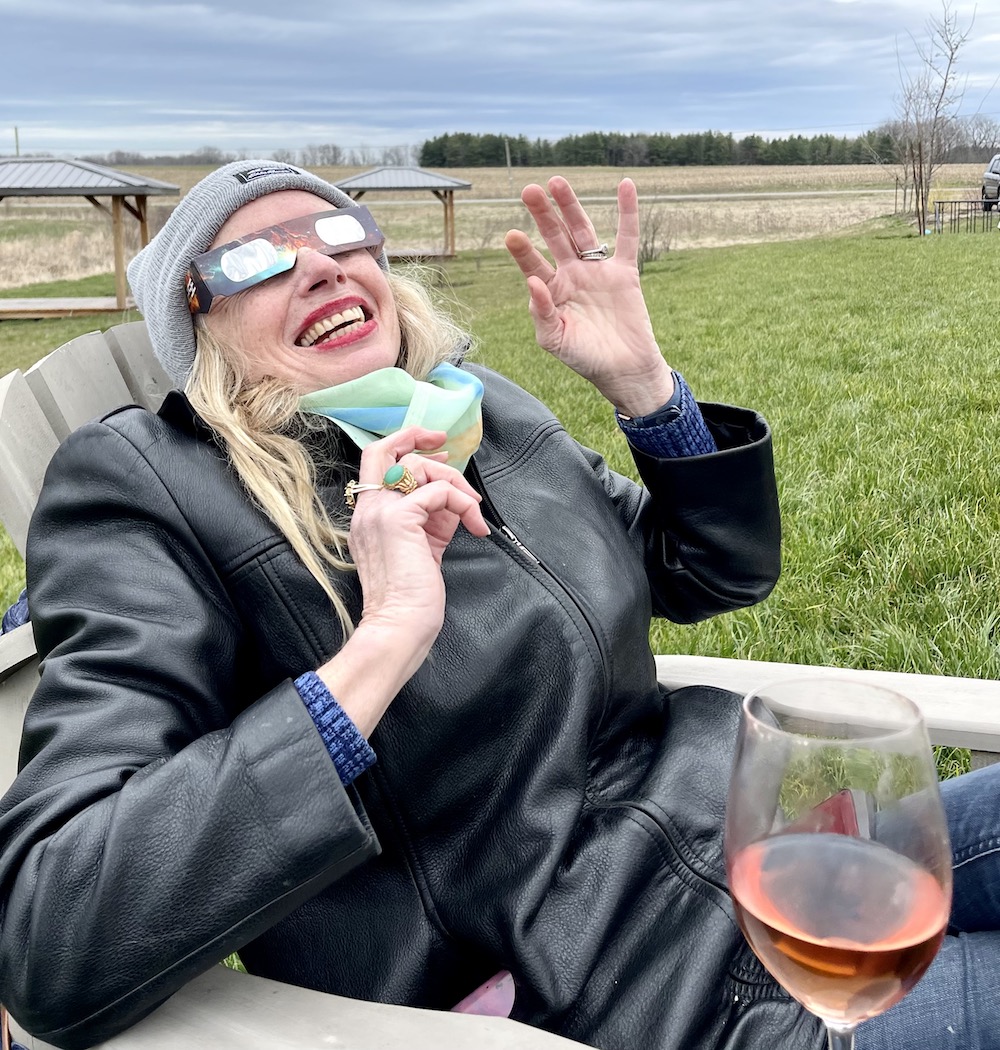
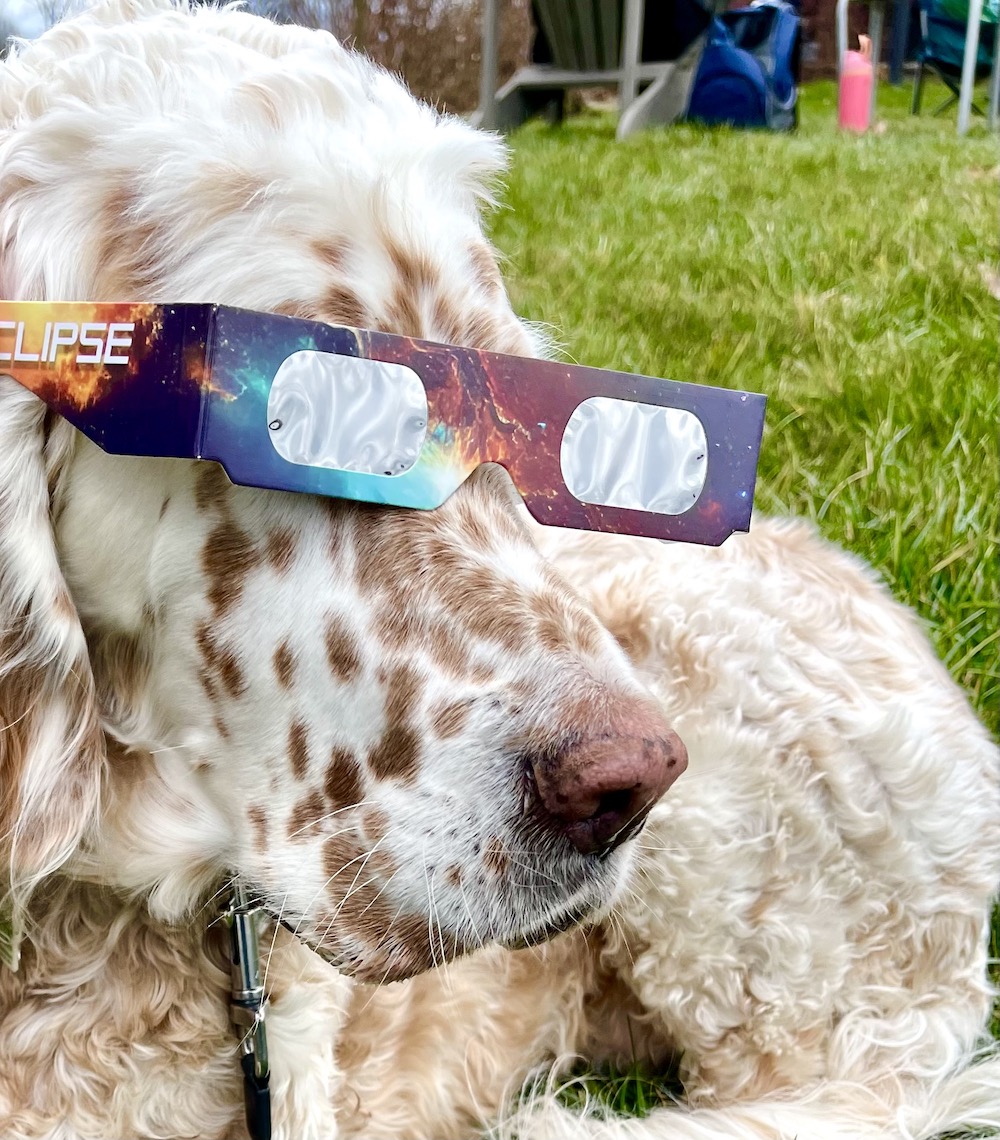
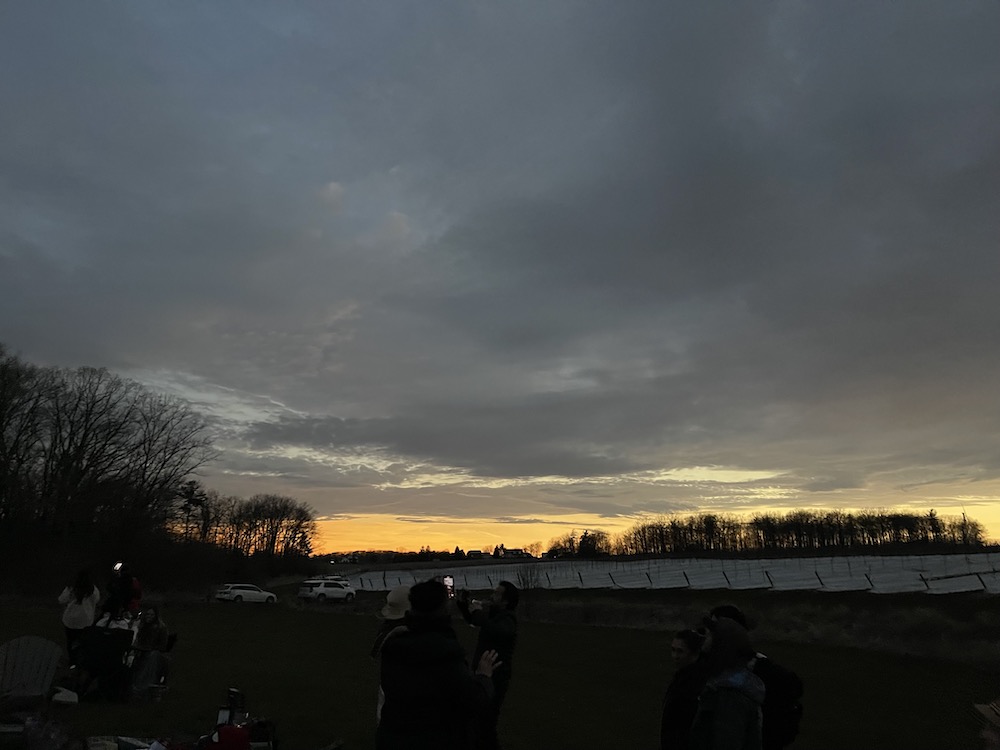
I was at Westcott with a friend and, of course, my dog Maisy, who seemed unfazed by all the fuss. We enjoyed the Delphine Rosé (NV) and Temperance blend of Pinot Noir and Gamay (reviews below) as we watched the drama unfold 149.96 million km away. It was a fun afternoon.
But enough about empyreal wonders, let’s get down to wine. We have a robust tasting report from Niagara wineries, including an eclectic range of Rieslings (if you read this website with any regularity, you know we’re on a mission to put this awesome grape on the pedestal it so deserves), and new wines from Westcott Vineyards (how about a double wild fermented sparkler), Vineland Estates (there will be Riesling), Drea’s Wine Co. (Dornfelder two ways), Reif’s award winning icewine, Lailey Vineyard (can’t get enough Riesling), Henry of Pelham (new vintages, new Riesling), and Southbrook (amphora aged, organic and beautiful). But let’s talk Riesling first, shall we?
There’s always a reason for Riesling
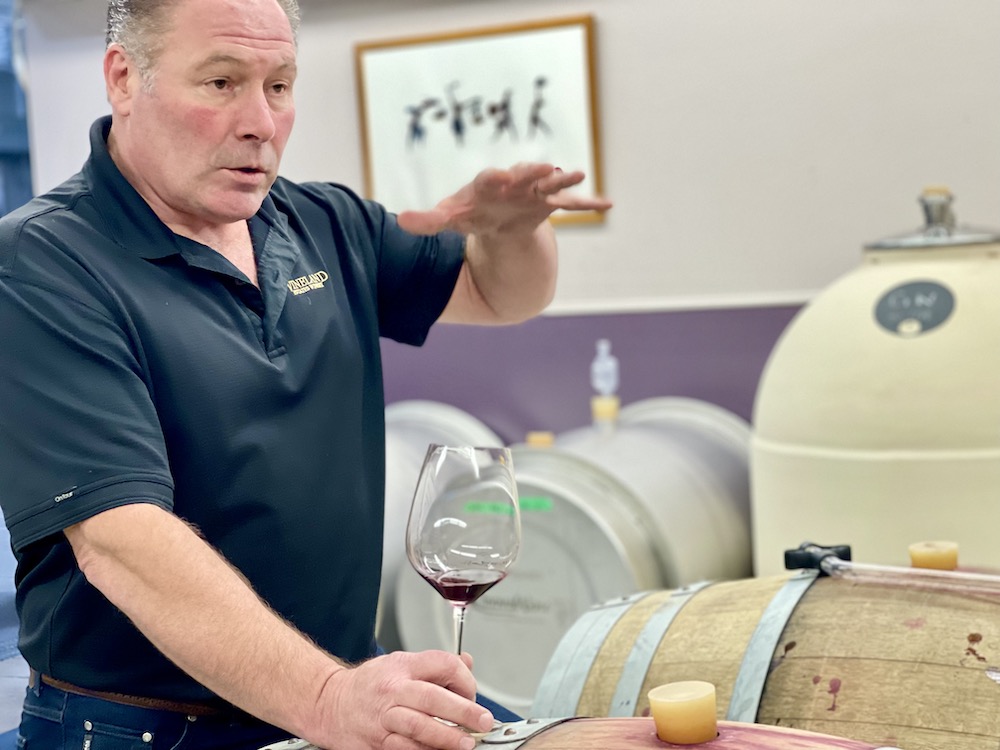
I have known Vineland Estates winemaker and former chair (but still on the board) of the Ontario Wine Appellation Authority (VQAO) Brian Schmidt. above, for longer than either of us care to remember. I will tell you this, he hasn’t once given me a scoop on ANYTHING. He is as tight-lipped as they come when it has anything to do with insider information. That doesn’t mean I don’t try.
At a “state of the union” lunch at the Vineland Restaurant recently we touched base on many topics impacting the Canadian wine industry as we munched on exquisite dishes prepared by chef George Ward. Several wines were chosen to pair with lunch, and, as always with Schmidt, Riesling was at the top of docket. Here’s what I liked, plus a few other Rieslings I’ve tasted lately.
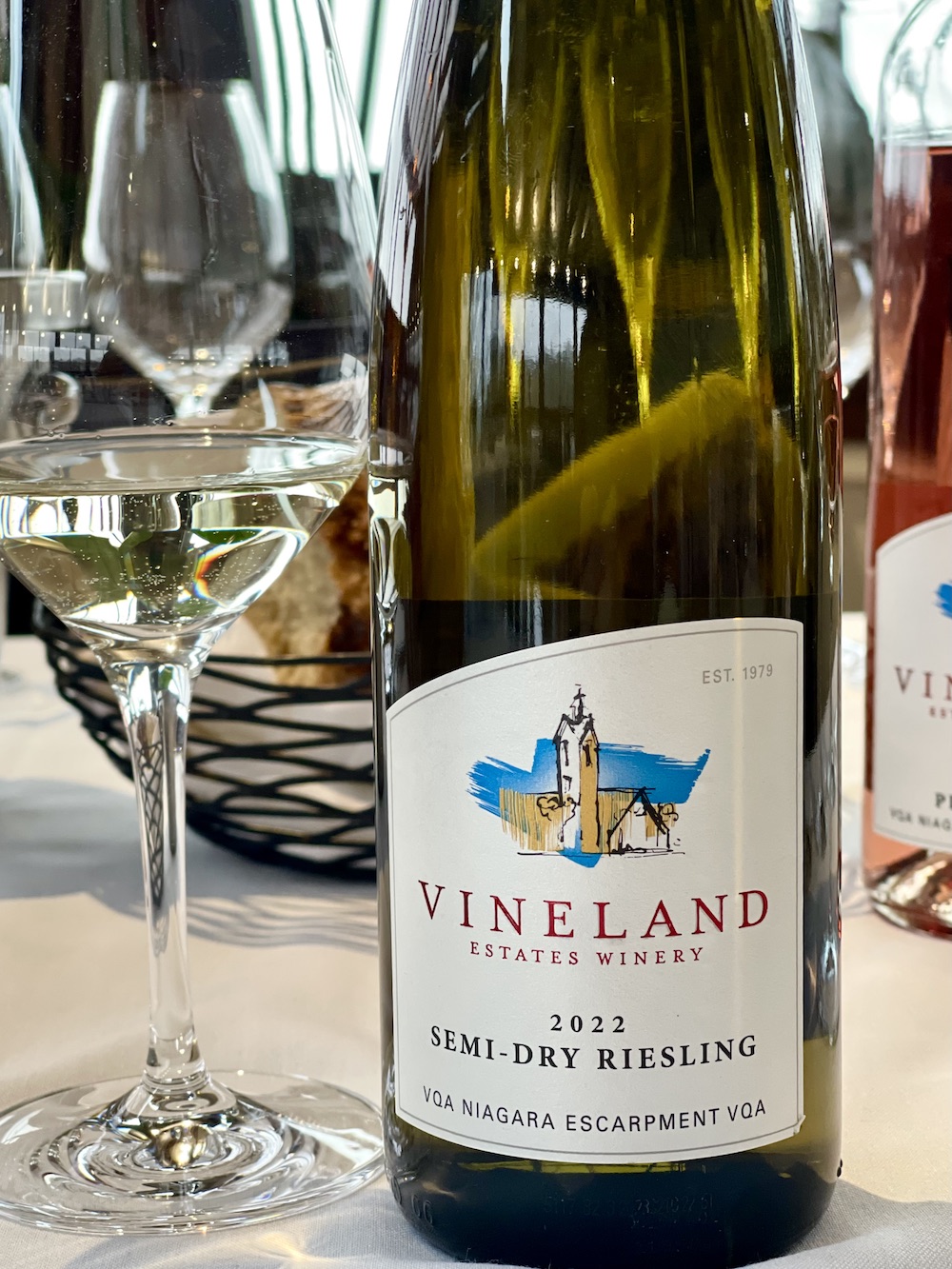
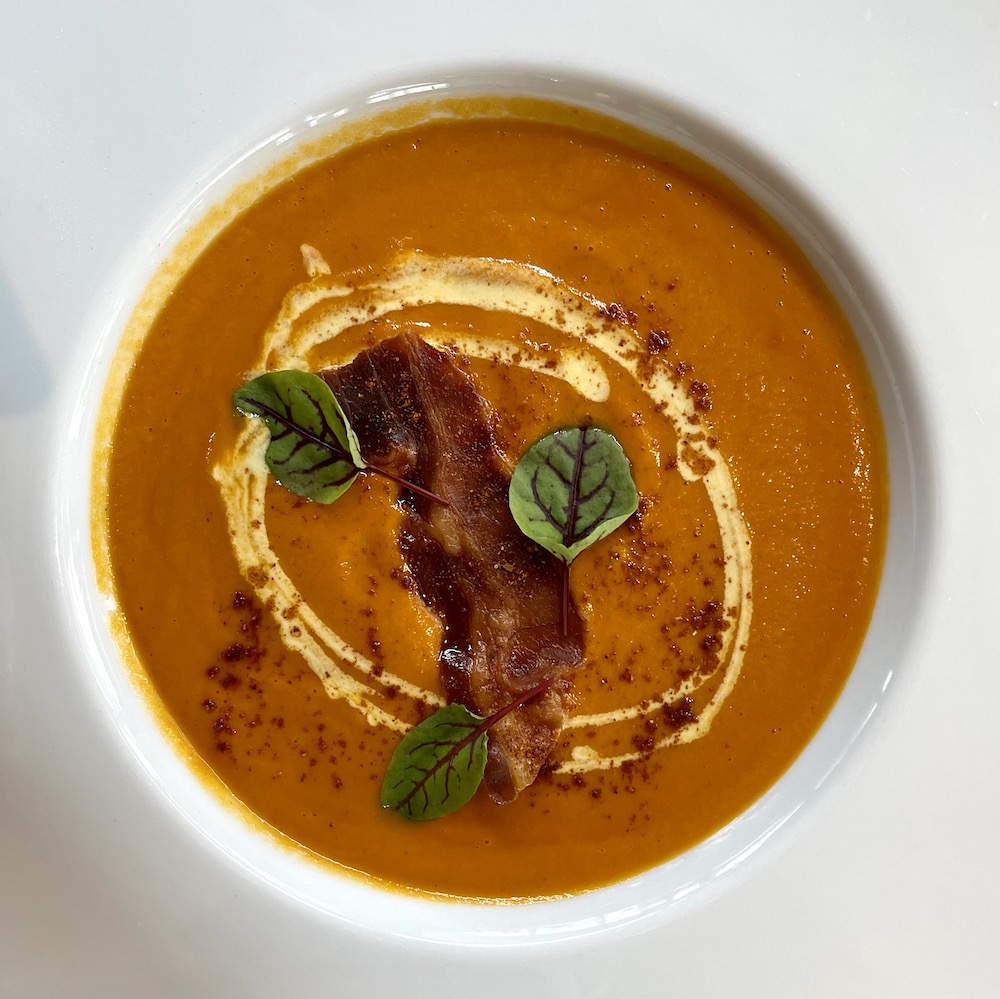
Vineland Estates Semi-Dry Riesling 2022 ($16, 89 points) — Schmidt never misses an opportunity to pour this iconic semi-dry Riesling. It’s the winery’s second most popular wine with its permanent place on the general list at the LCBO, and its attractive price. The extensive Riesling program at Vineland Estate flows from this entry level wine and same care goes into the semi-dry as every other wine in the portfolio. As Schmidt once told me: “I’m really thrilled with this wine. This wine has been a consistent style for the past 20 to 25 years regardless of the vintage. We have a consistent style that people enjoy.” And that’s so true. It always has this lovely floral note to start on the palate with fresh apples, citrus, peach and a little something that Schmidt calls bergamot. It has a sweet-tart yin and yang on the palate and a melange of apple, peach, and mouth-puckering citrus from the juicy acidity. That much goodness for $16? A no brainer. By the way, it paired nicely with the carrot, coconut and bacon soup by Chef Ward.
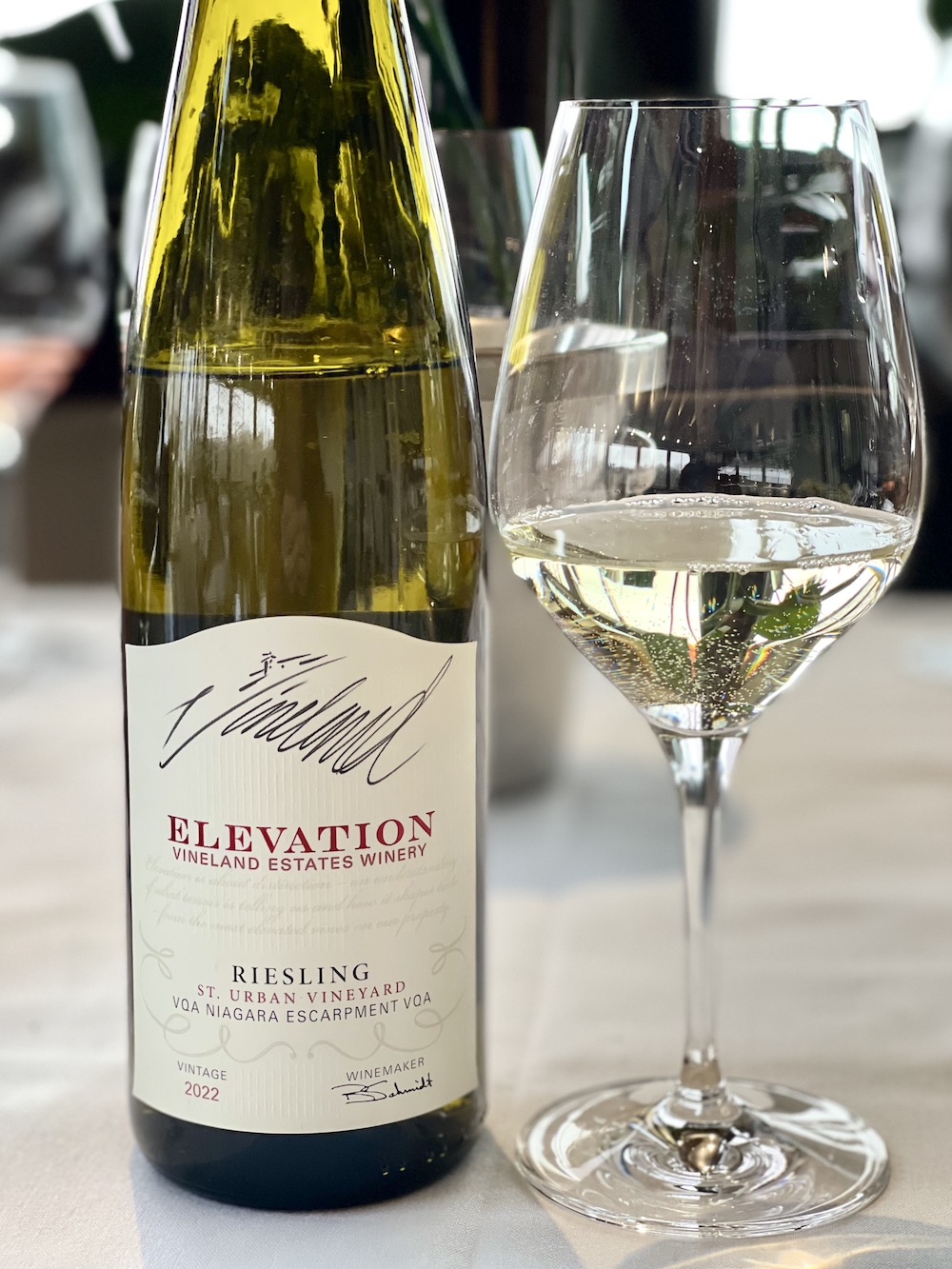
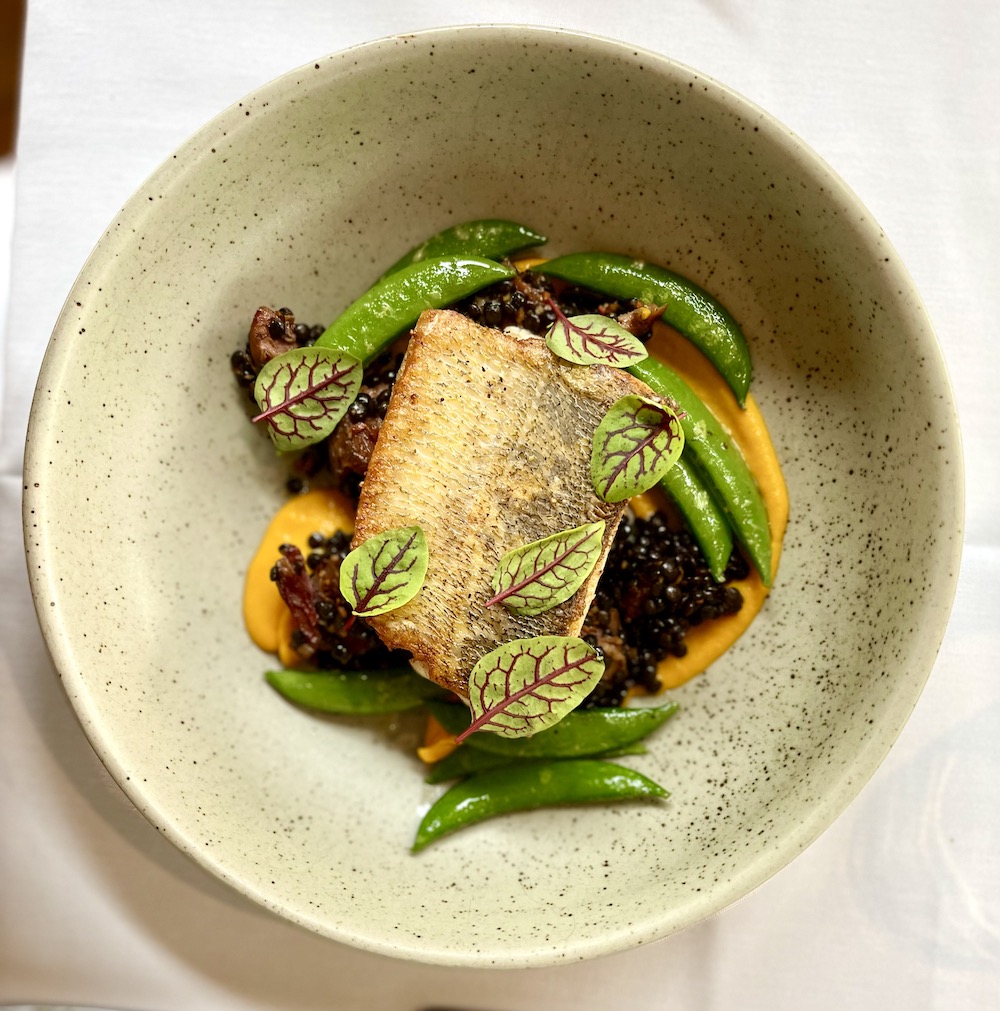
Vineland Estate Elevation St. Urban Vineyard Riesling 2022 ($23, 93 points) — The wine we both chose to pair with our Lake Erie pickerel with field peas, ham hock, Beluga lentils, and fermented carrots, was the Elevation Riesling from the historic St. Urban Vineyard that planted in 1979 and has consistently made some of most minerally-specific Rieslings in the country. Schmidt sourced the grapes from the estate’s St. Urban Vineyard Field D for this wine. The Elevation is now the top seller at Twenty Mile Bench winery, surpassing only recently the semi-dry Riesling. It’s finished with 28 g/l of RS. This follows closely to previous versions with a pretty and profound nose of fresh-squeezed lime, wet stones and saline minerality, green apple, apricots, lemon blossoms, and pear. It has lovely texture on the palate with intensity and verve to go with a mélange of lime/citrus, ripe pear, a hint of honey, subtle peach notes, stony minerality, ginger and electric acidity driving the back end and keeping everything in balance. These Elevation Rieslings have a sound history of aging beautifully for 10 years plus. Great value from a top-notch Niagara Riesling from the Twenty Mile Bench and a perfect pairing with the pickerel. Load up!
Other wines tasted at lunch:
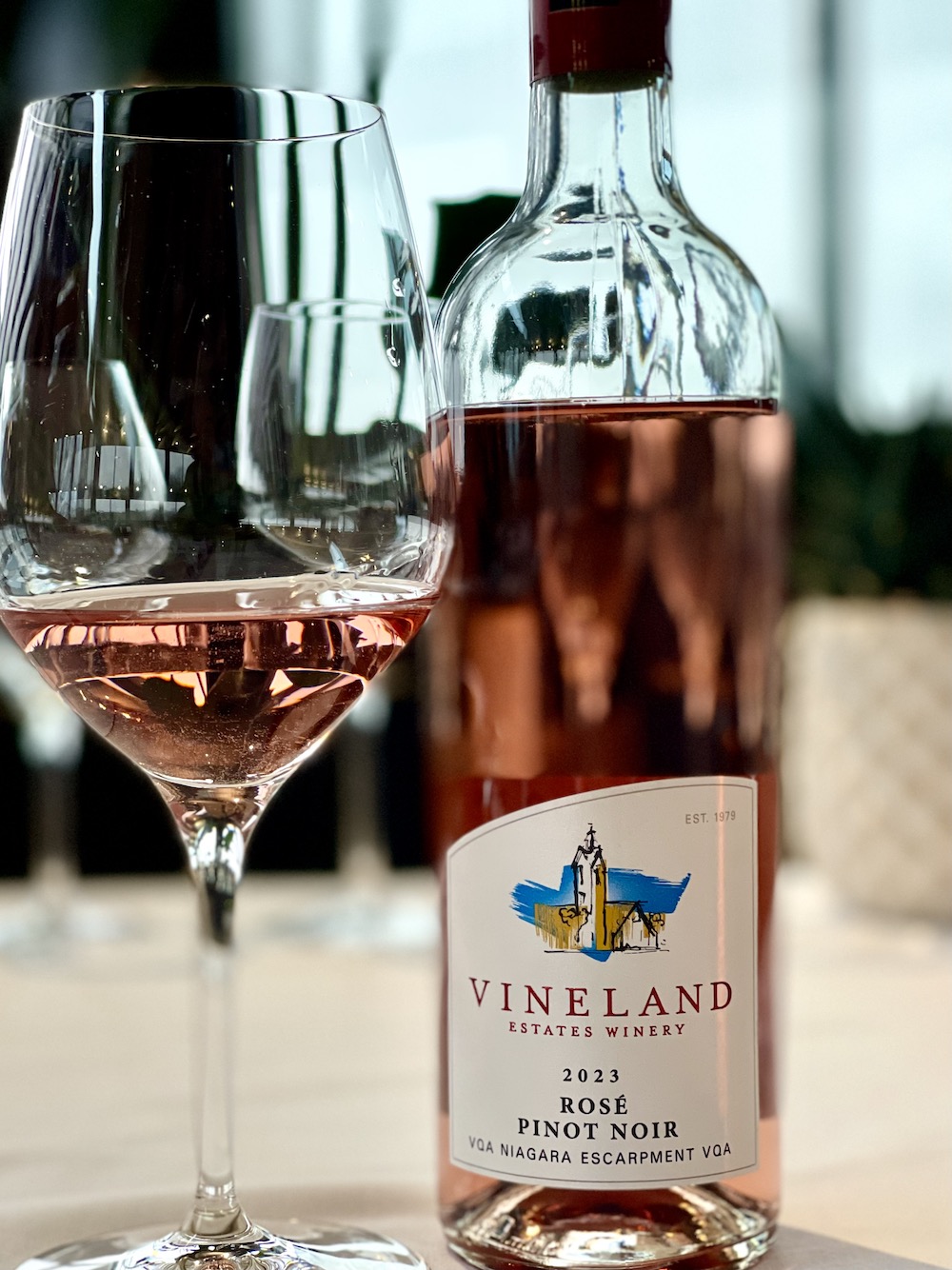
Vineland Estates Pinot Noir Rosé 2023 ($23, released Mother’s Day, 90 points) — This is the very first rosé made from Pinot Noir from Schmidt. It shows a pretty, pale salmon colour in the glass with the full melange of red berries, cranberries, and a touch of citrus. It’s fairly dry on the palate with succulent raspberries, cherries and a zesty finish from the mouth-watering acidity.
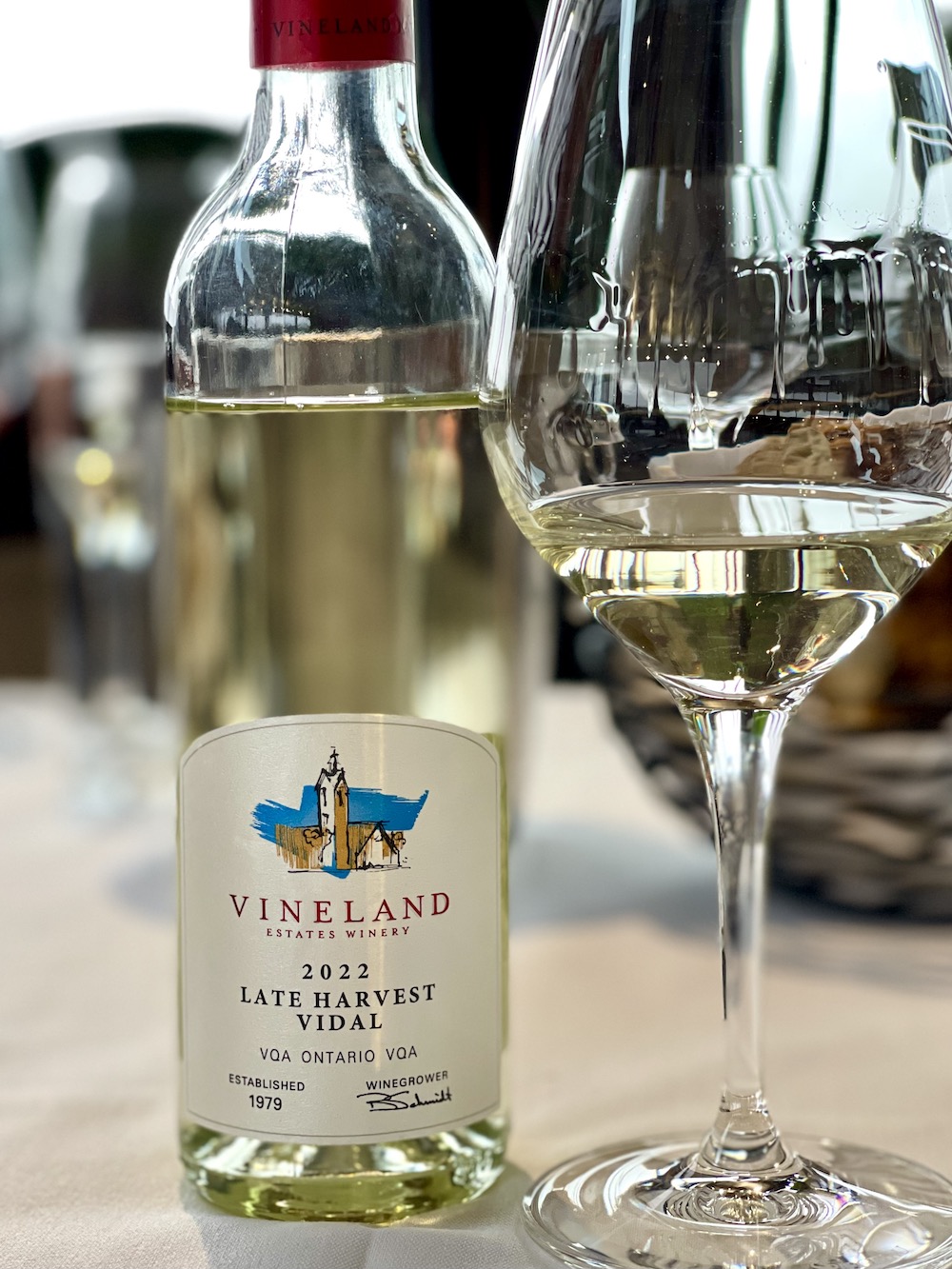
Vineland Estates Late Harvest Vidal 2022 ($15 for 375 mL, 89 points) — The blend is 88% Vidal with the rest Riesling and is made in what I would describe as a medium-sweet style. The nose shows mature yellow apples, peaches, pears, apricot and honeycomb notes. There is honey sweetness on the palate, but nicely balanced with ripe pear, quince, peach pie, lanolin/beeswax, and a freshening finish. Delightful pairing for those less sweet desserts.
Riesling done two ways from Lailey
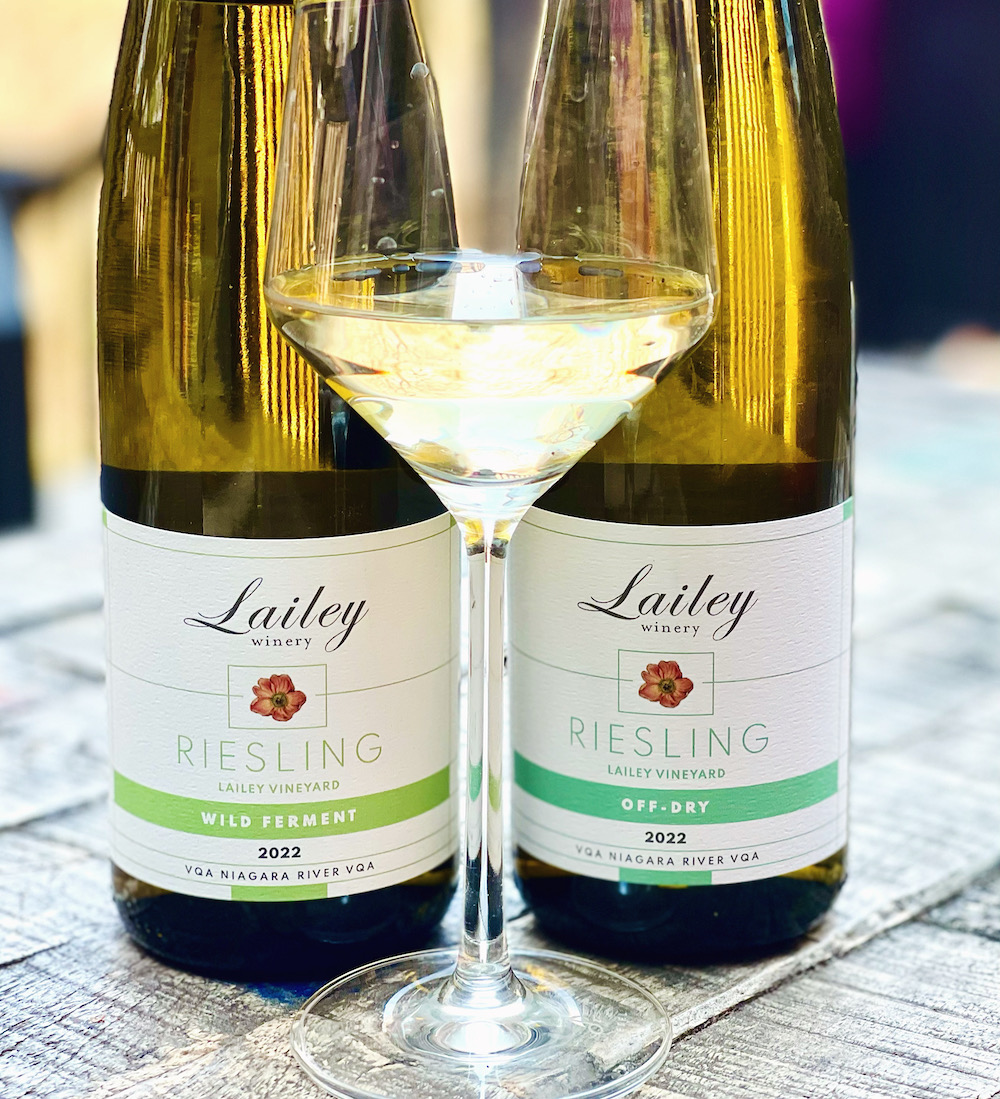
Lailey Wild Ferment Riesling 2022 ($39, wine club only for now, 93 points) — This is an estate Riesling from Lailey’s Niagara River sub-appellation. You expect something special from the winemaking team of Ann Sperling and Peter Gamble, and they have delivered here. It has such a lovely floral opening on the nose with oyster shells, lemon, fresh apricot, white peach, and pure salinity. There’s uncharacteristic weight and texture on the palate, a little bit of reduction and loaded with saline minerality to go with bergamot, guava, mango, and stone fruits in a brilliantly dry expression with mouth-watering acidity on the finish. Can cellar to 2031, maybe beyond.
Lailey Off-Dry Riesling 2022 ($29, 92 points) — This sister Riesling, described as “off-dry,” is fresh and perfumed on the nose white peach, tropical notes, pear, golden apple, and subtle honeycomb. The sweetness on the palate is tempered by rousing acidity and salinity propping up the lemon-lime, citrus, mango, and quince fruits all leading to a bright, finessed finish. Cellar to 2030.
Niagara Riesling for $13? You bet, and it’s delicious!
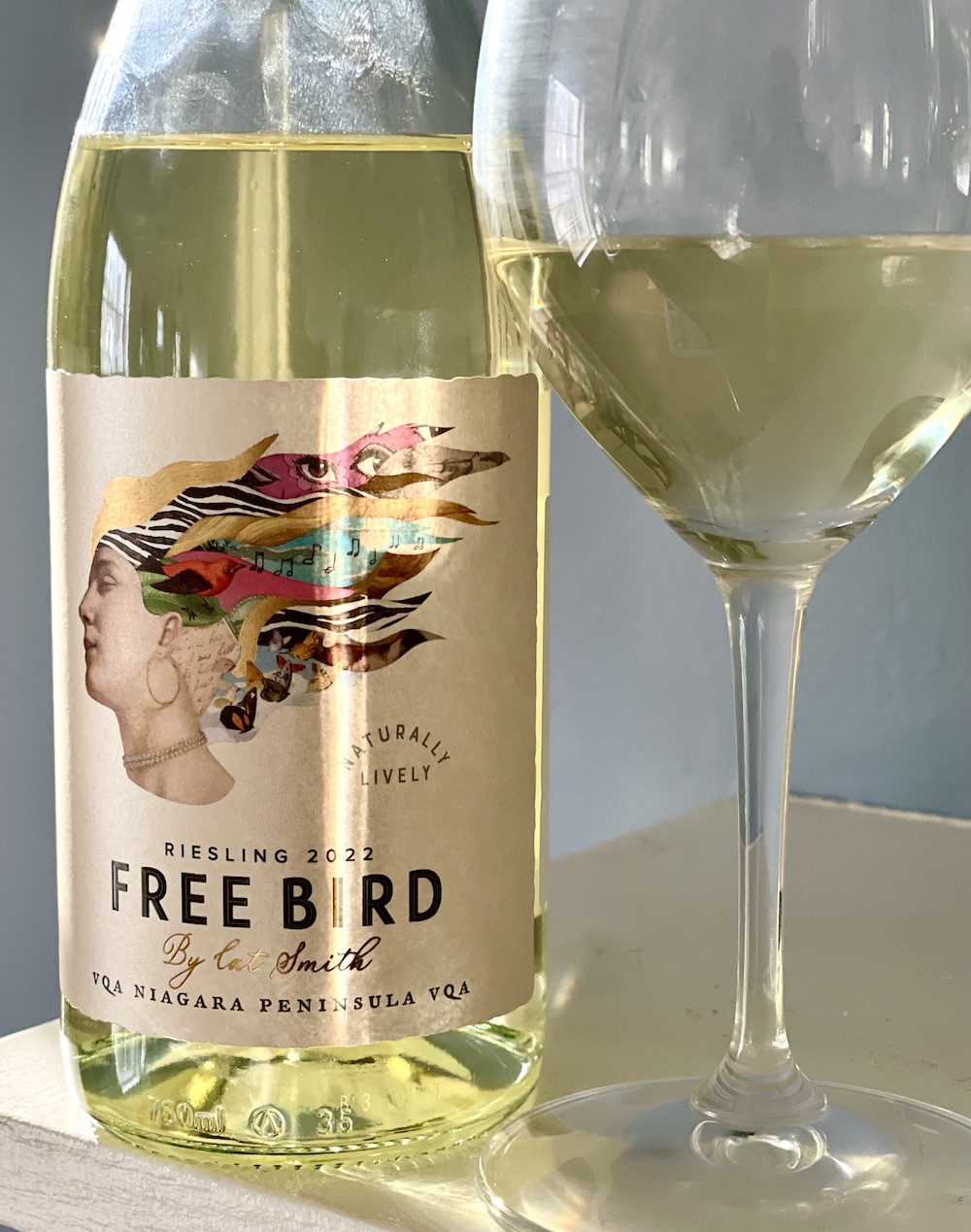
Henry of Pelham Freebird Riesling 2022 ($13, 88 points) — This new-to-me Riesling from HoP is billed as a “re-imagining” of this prolific Niagara variety, “like driving into a cool pool on hot day, this wine is adult lemonade.” At $13 I certainly wasn’t expecting much, but, boy, was I wrong. This is a softer, approachable Riesling with layers of peach, apple, mango, nectarine and just a pinch of citrus on the nose. On the palate it’s fresh, smooth, with only 7 g/l of RS and loaded with ripe orchard fruits, some round tropical notes and highly quaffable in its simplicity from start to finish. Just a fantastic, everyday wine for poolside, porch side, Survivor watching side, here come the neighbours kind of wine. All that for $13. Crazy. After tasting for review, my wife and I polished off the bottle.
Drea’s Dornfelder done two ways
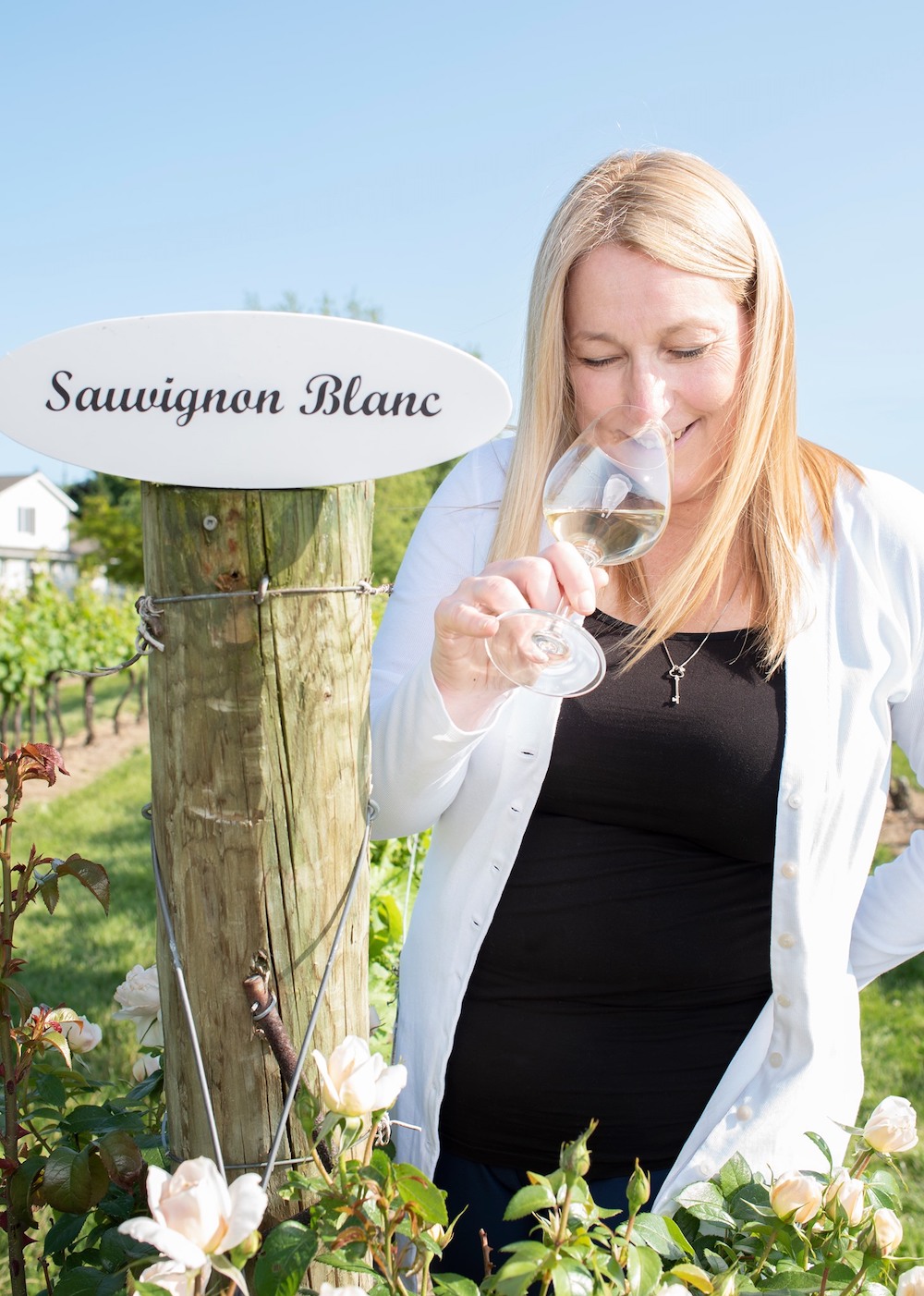
Drea’s Small Batch Wines are crafted in Niagara-on-the-Lake by Andrea Kaiser (above), daughter of late winemaker Karl Kaiser who co-founded Inniskillin Wines. As a visionary pioneer, his contributions to modern Canadian winemaking cannot be understated. Kaiser closely follows the tenants of her father’s winemaking philosophies with a focus on natural fruit flavours and aromas, making bone dry wines that are well balanced with bright acidity. The wines in her collection are an expression of his legacy and are dedicated to her father, who affectionately called her Drea.
The two wines below are made from the Dornfelder grape, which Kaiser loves to work for its “great colour and juicy fruit flavours that I find we don’t normally see in Ontario.”
When Kaiser brings in the the Dornfelder, “I pull juice off by the saignee method for the Rosato — cold ferment, of course — and then for the red I take the remaining must, which has a higher concentration of skins and seeds than normal, and ferment into a red wine,” she said. “So, while the wine is bright and fresh it also has some nice complexity from the higher ratio of skins and seeds. And while I do put it into oak, it is neutral so that the fruit comes first.”
Here’s what I liked:
Note: You can purchase Drea’s wines here.
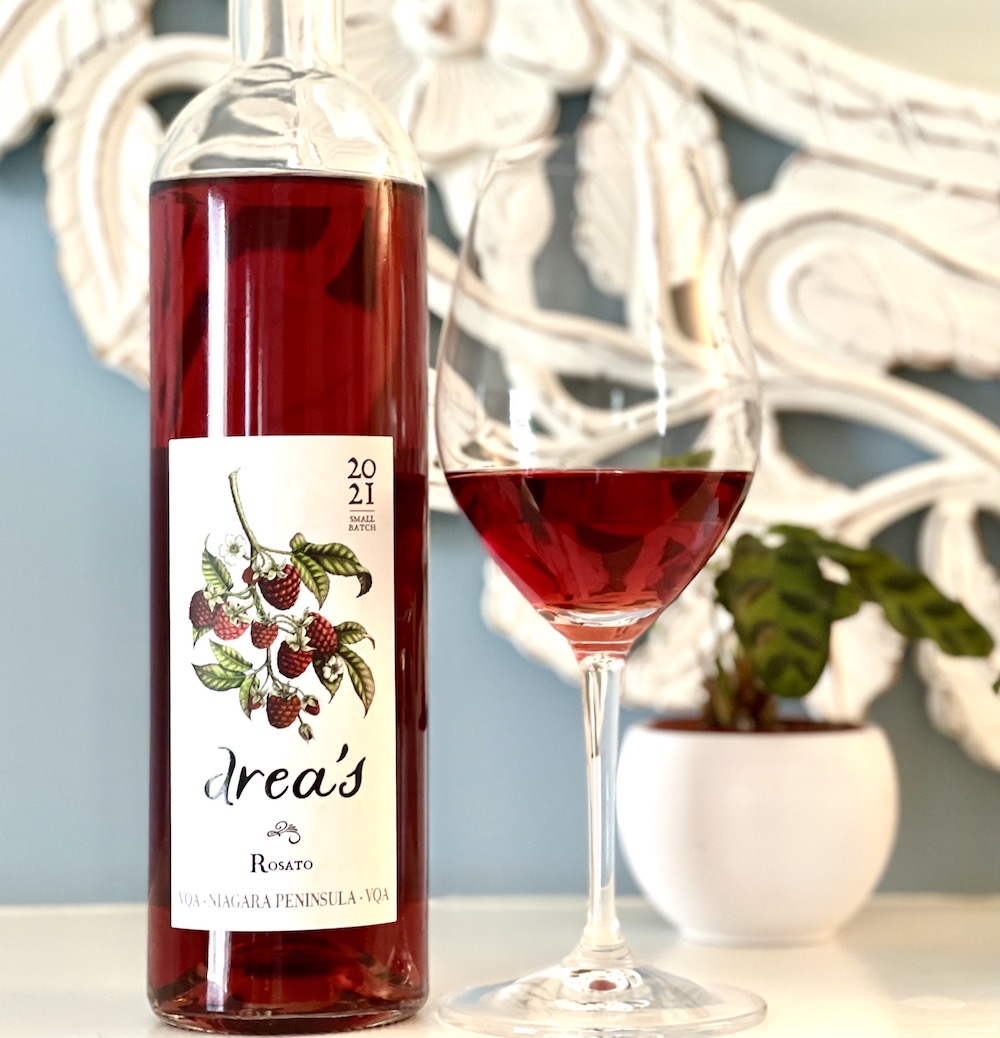
Drea’s Rosato 2021 ($29.50, 90 points) — “You say rosé, I say rosato,” said Kaiser. Rosato is an Italian-style rosé made from Dornfelder, a unique grape variety, and cherry red in colour. “In designing this wine, I wanted to select a red varietal that had ample berry flavours, good skin colour and bright acidity. I had to look no further than one of my father’s favourite grape varieties, Dornfelder, that he knew from his homeland Austria.” I would say, mission accomplished. This is a bold style of rosé with a riot of brambly raspberries, red currants, anise, and earthy notes that is wild and untethered. It’s robust, especially for a rosè, with meaty red berries, earthy/savoury notes, and anise with a bright, lifted finish in a completely dry style. Could even pair this with most red eats if you wanted to.
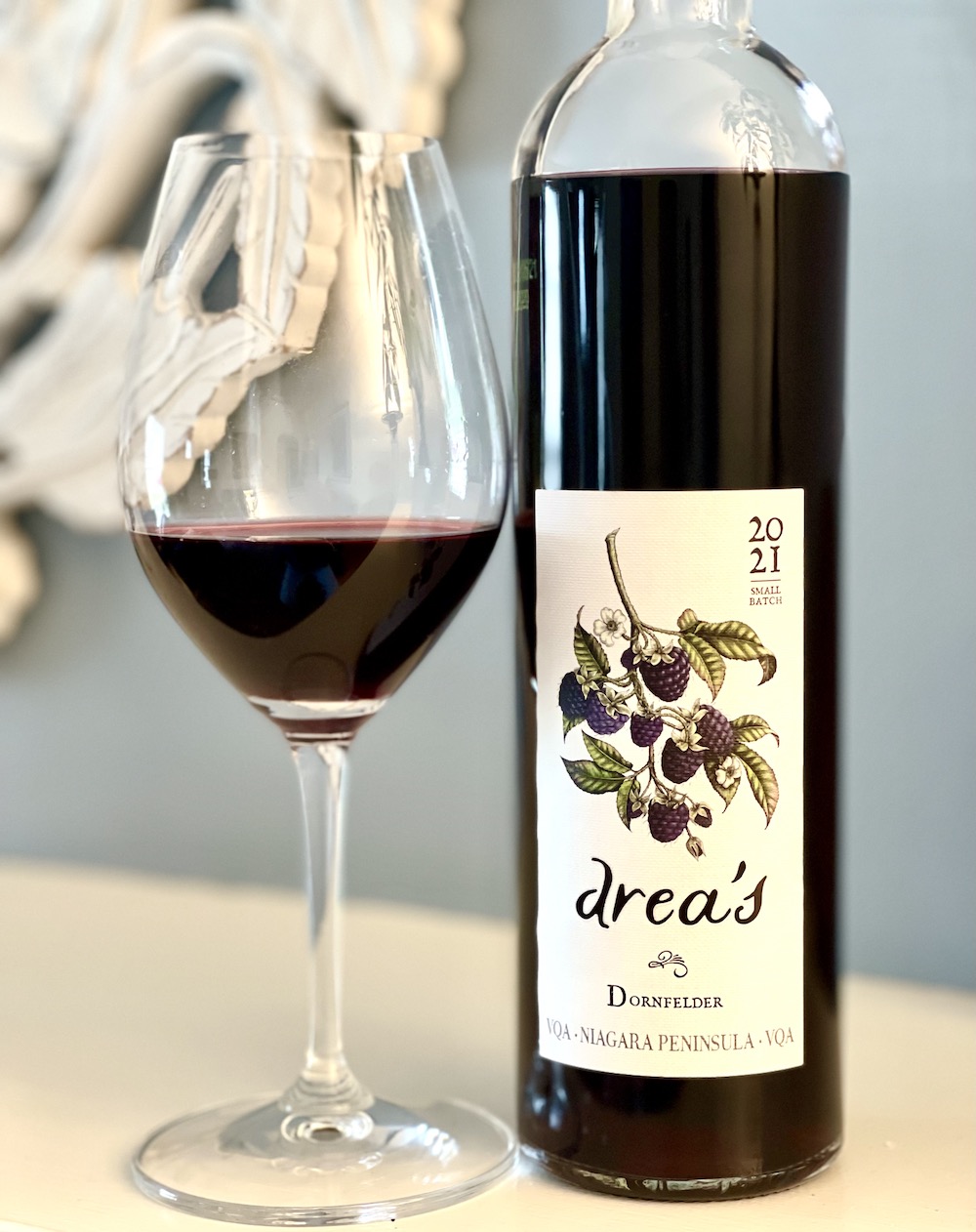
Drea’s Dornfelder 2021 ($34.50, 91 points) — Kaiser’s father Karl loved this variety for Canada as it is winter hardy, easy to grow and ripens early. No oak used in fermentation or aging. It’s inky dark in the glass with a bold and assertive nose of dark cherries, anise/licorice, roasted fennel, black currants, herbs, and blackberry jam. It’s concentrated, bold and sassy on the palate with notes of rich blackberries and currants, brambly black raspberries, pepper, medium+ tannins for structure and a perky, lifted finish. There is nothing shy about this assertive red wine that calls for a big, juicy, rare filet mignon. Could cellar a few years but drinking fine right from the get-go.
Eye popping Reif icewine
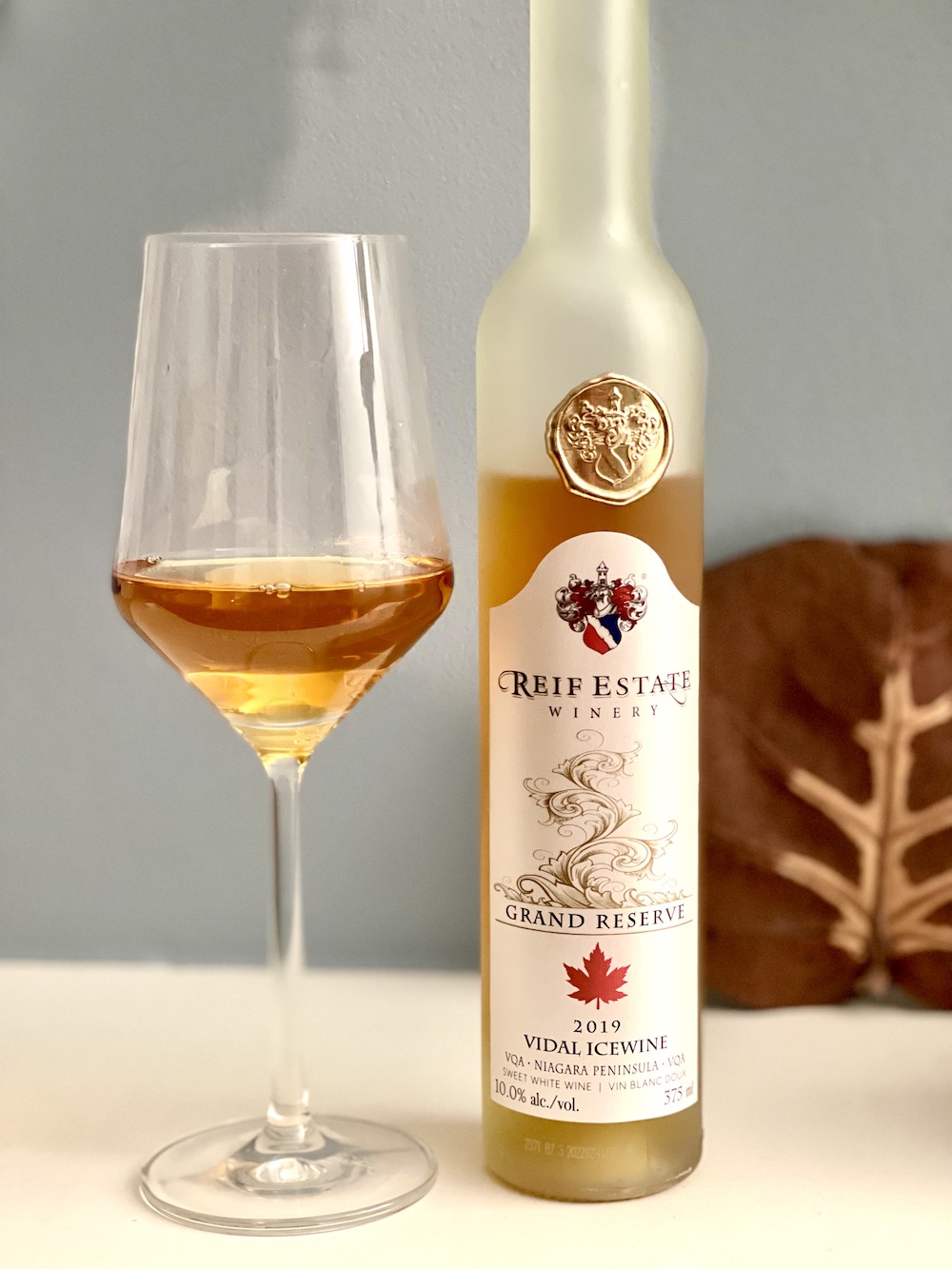
This Reif Grand Reserve Vidal Icewine was recently selected as the “best of show” for the icewine style at the TEXSOM International Wine Awards in Texas. “While of course, it is always a pleasure to have our wines recognized around the world, there are some awards that feel extra special, and this one of them,” said Reif president Klaus Reif. “To win one of the highest and most coveted awards of the competition is immensely rewarding for the entire winemaking team.”
Reif Grand Reserve Vidal Icewine 2019 ($80 for 375 mL, 94 points) — With a bit of age, this exquisite icewine shows a deep golden colour in the glass and explodes with ripe apricot tart, mulled peach, citrus marmalade, apple pie and wild honey. The texture on the palate is rich, creamy and luxurious with mature stone fruits, dried apricots, leaning toward caramel/toffee notes and layers of wild honey from the 265 g/L of residual sugar that is somewhat countered by mouth-watering acidity. Such a magnificent icewine with room to age and amplify those interesting tertiary notes.
Westcott’s innovative new
Blanc de Noirs (and other new wines)
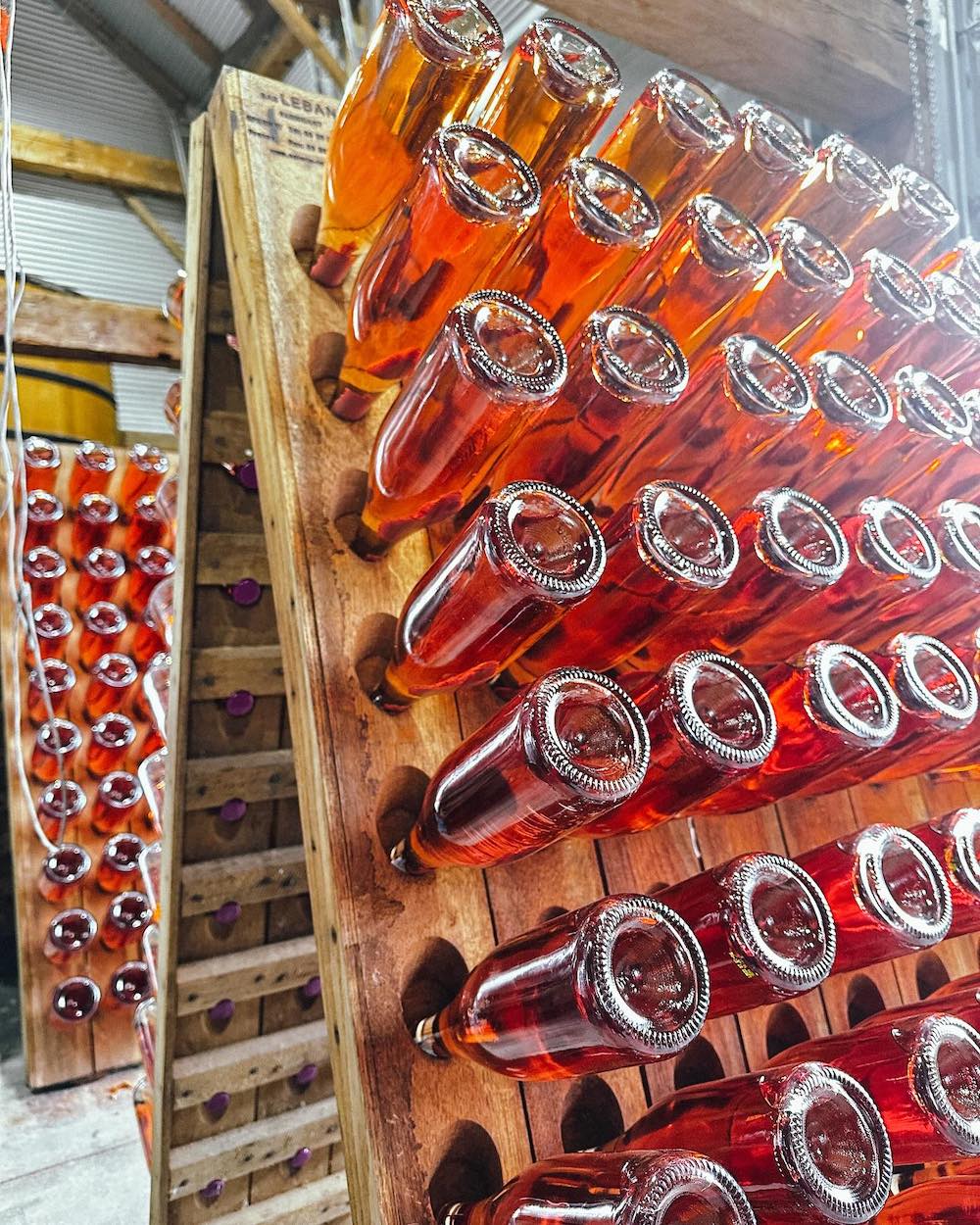
If every bottle of wine tells a story, the tale behind this sparkling wine from Westcott Vineyards is a whopper.
The background behind the Brilliant Blanc de Noirs, purposely designed as a “perpetual,” multi-vintage wine, is a complicated one and is the first time I heard about sparkling wine being double wild fermented. I got some help from Westcott owner Grant Westcott to explain the intricacies of how it was conceived.
It’s the first iteration of this new sparkling wine and the first release of a non-vintage Blanc de Noir, which dates back to the 2019 vintage, so five years on the lees. “Casey (Kulczyk, winemaker) designed this wine to be a perpetual wine,” explains Westcott. “What that means is each year we make 1,000 litres of new base wine (other than the first year, which started with 1,500 litres) which is fermented with wild yeasts and is then blended with 500 litres of the previous vintage and then aged in three 500-litre neutral oak puncheons.”
The estate Pinot Noir is picked at higher brix (19.5 to 20) than normal in order to enhance the flavour profile. “We can do this because our vineyards produce higher sugar levels without sacrificing acidity, Westcott said. “A year later we the add naturally (wild yeast) fermenting juice which has been stored from the previous fall and add it to 1,000 litres of the 1,500 litres and bottle the wine thereby completing the two ferments. The remaining 500 litres will be blended into the next vintage etc. Four years later, when we disgorge the wine, we add no dosage. The reason we go to such lengths to do this is to demonstrate that everything in this wine comes from Westcott Vineyards with nothing added from elsewhere. Place really matters,” Westcott explained.
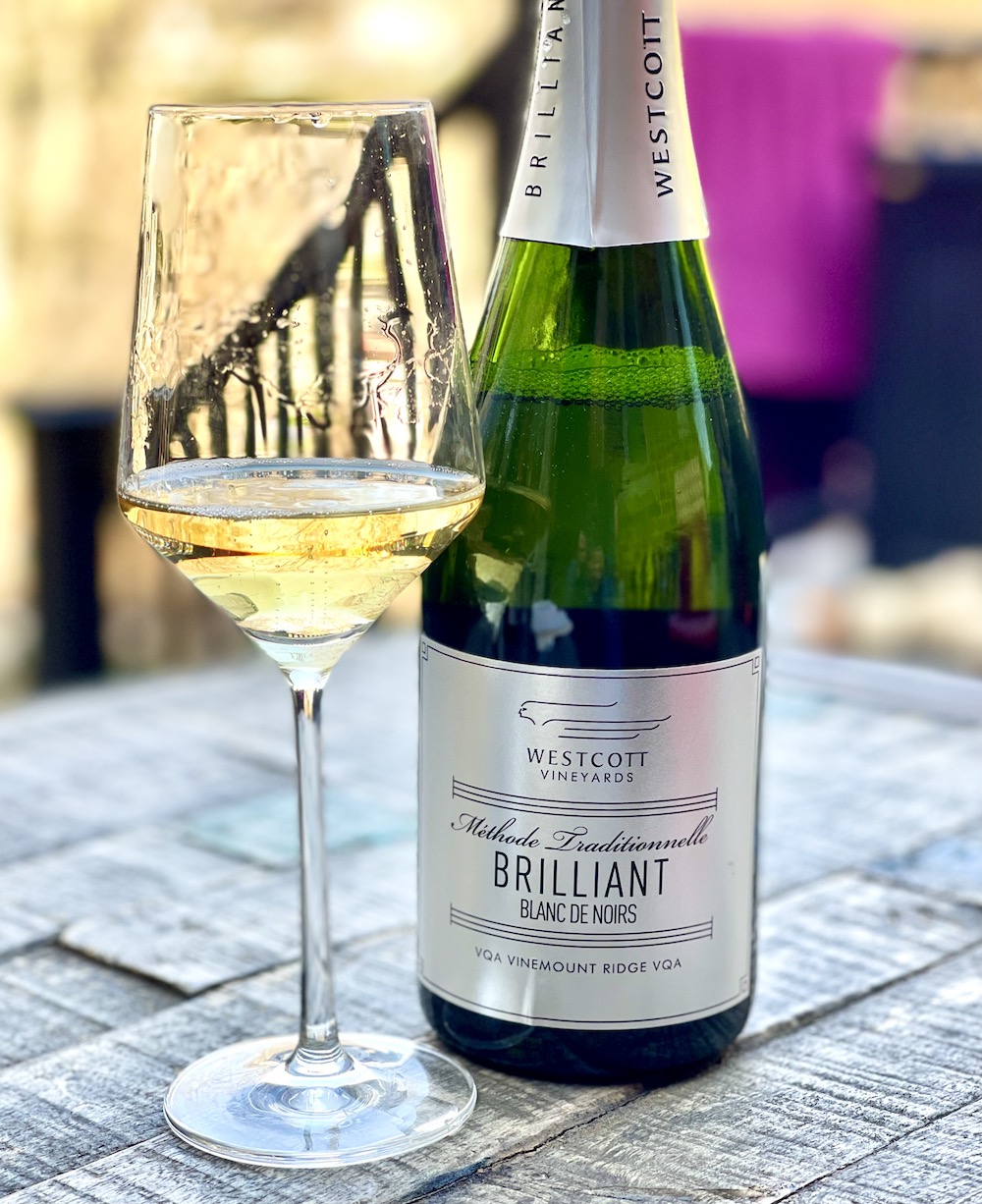
Westcott Brilliant Blanc de Noirs NV ($48, 94 points) — The sparkling program at Westcott draws on the experience of the grower movement in France where both Pinot Noir and Chardonnay grapes are picked with higher maturity to enhance phenolic development and resultant taste. Westcott uses only natural yeasts in both the primary and secondary fermentation, neutral oak aging and little to no dosage to showcase natural fruit aromas and taste. All bottles are hand riddled and disgorged in small lots. The double wild fermentation for the Blanc de Noirs is conducted in French oak barrels and the wine is riddled with five years on lees and zero dosage. It’s a fascinating wine with a pretty light gold colour in the glass and a nose of flinty/brioche, toasted vanilla, yellow apple, lemon cream, and pear skin with a fine bead in the glass. On the palate, those flinty/mineral notes lend complexity and intrigue to this unique sparkler. Such wonderful texture and verve on the palate with ripe stone fruits, zesty citrus, baked bread, elegant bubbles, and mouth-watering acidity that provide lift and finesse on the finish.
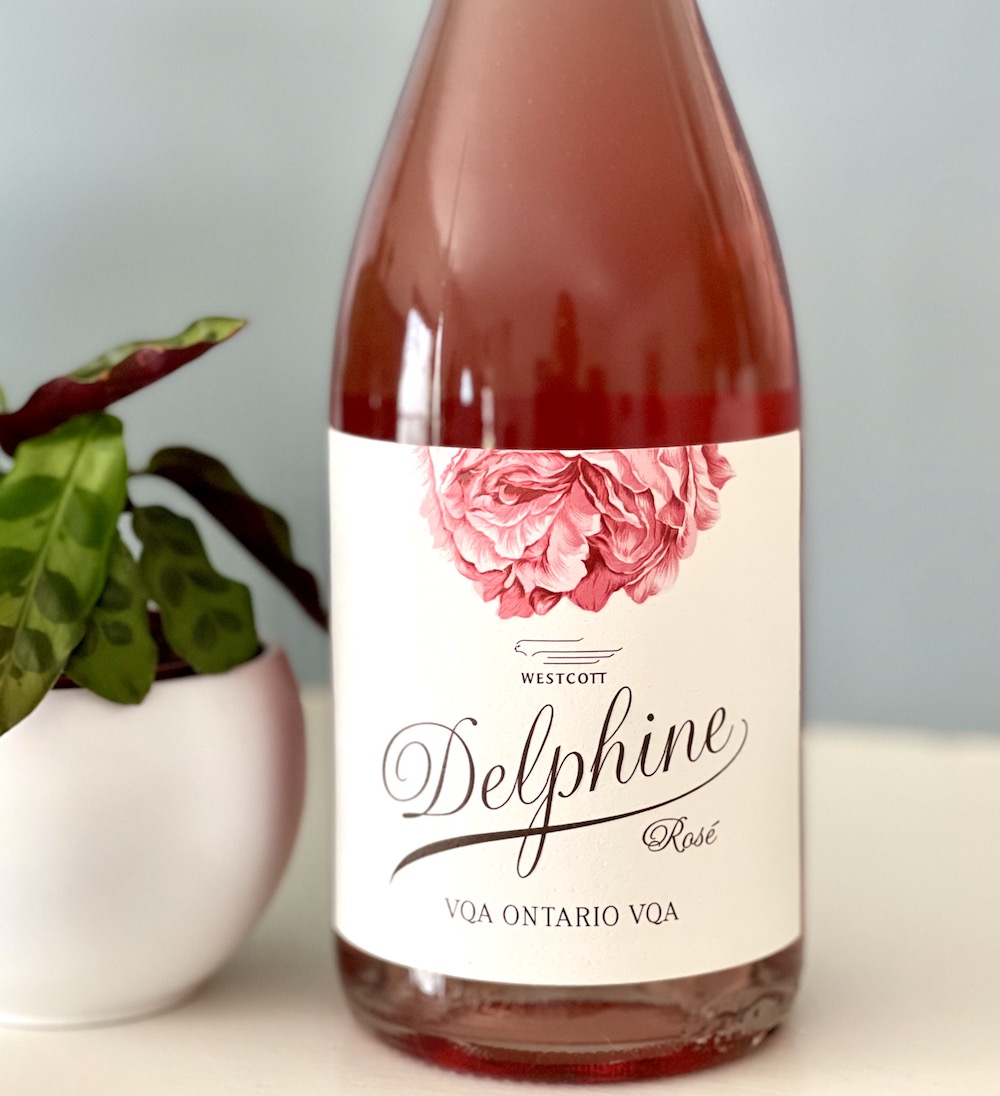
Westcott Delphine Rosé NV $22, 89 points) — This Cabernet Franc non-vintage rosé gets its bright magenta colour from six hours of skin contact and extended lees aging is employed. This is the more robust of the two recently released rosés with a bright nose of red berries, herbs, a touch of anise and earthy notes. It’s refreshingly dry on the palate with brambly raspberries, tart cherries, garden herbs and zesty citrus on the mouth-watering finish.
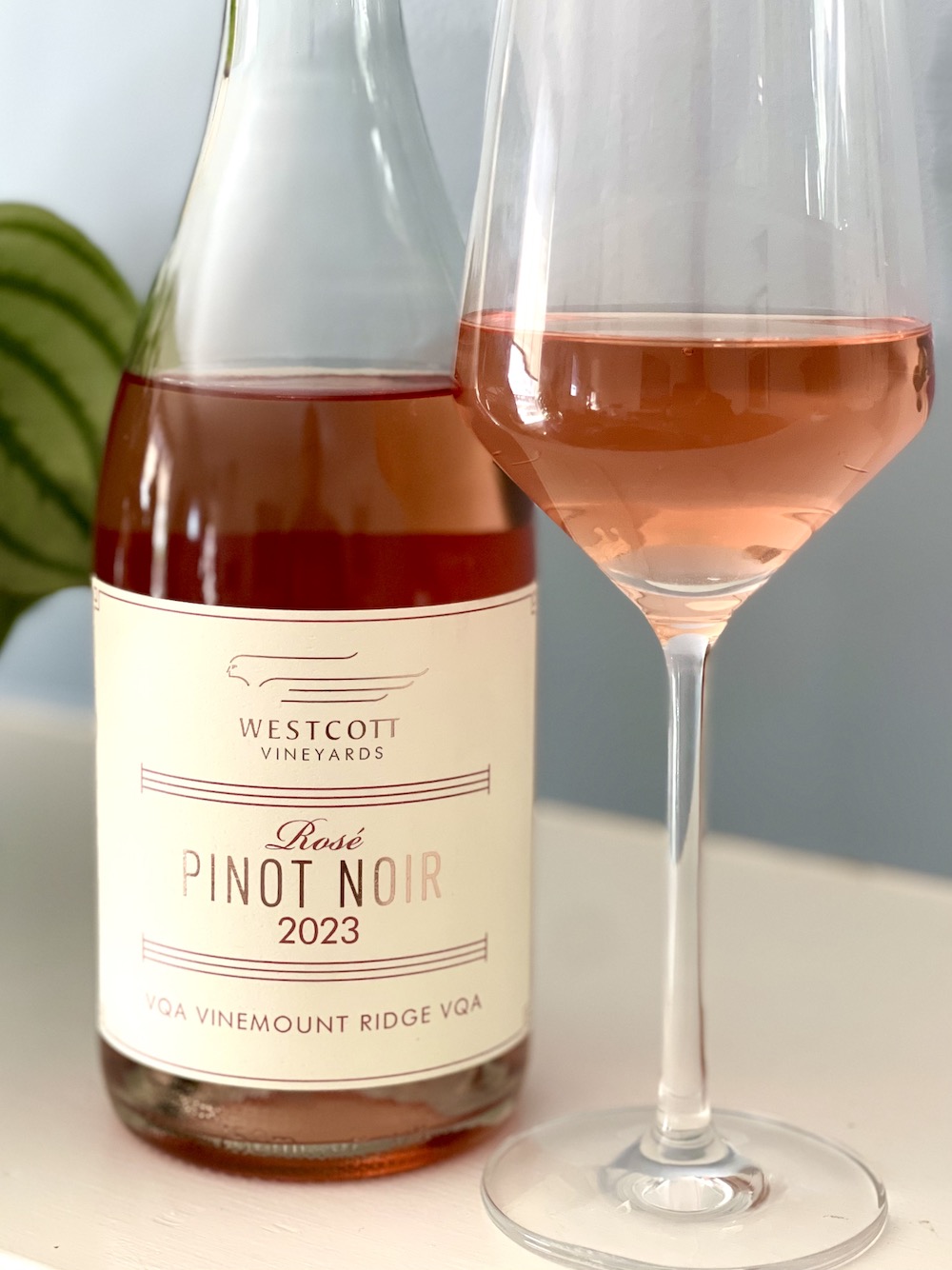
Westcott Pinot Noir Rosé 2023 ($26, Vintages now, previously reviewed, 92 points) — One of two impressive rosés from different varieties in Niagara that are hitting the shelves just in time for spring. The Westcott rosé is made from 100% estate Pinot Noir from the Vinemount Ridge sub-appellation. With a pale salmon hue in the glass, this lovely rosé is both pretty to look at and pretty on the nose, with a medley of summer cherries, fresh raspberries, strawberry tart, cranberries, and a subtle note of zesty citrus. It’s perfectly balanced on the palate with juicy red berries and red currants in a refreshingly dry style that carries through the zesty finish.
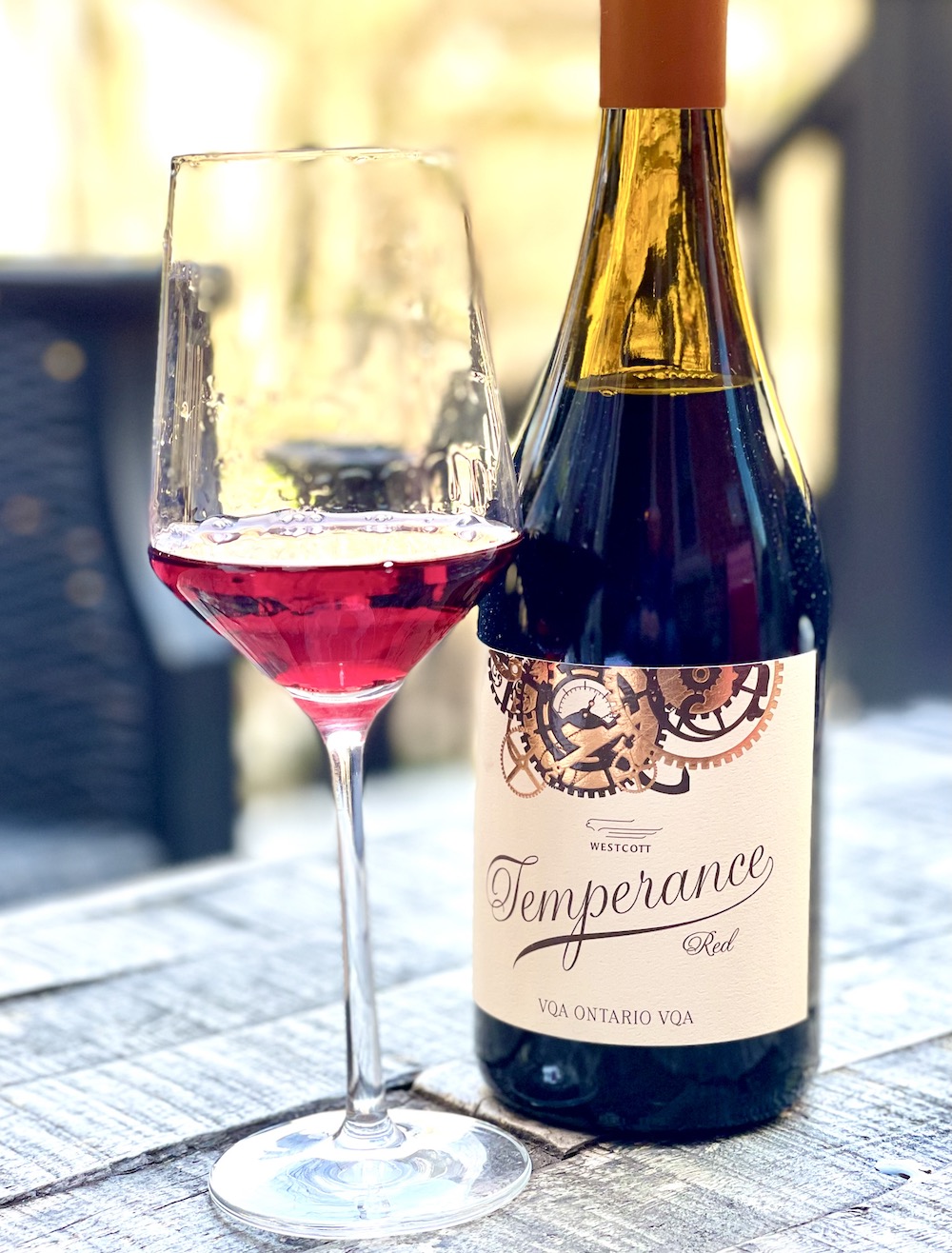
Westcott Temperance Red Blend NV ($22, 88 points) — The blend is 50% Pinot Noir and 50% Gamay made in the quaffing style of every day wines called passe-tout-grains (PTG), popular in Burgundy. It shows a light shade of red in the glass with an earthy, somewhat rustic nose of plums, brambly red berries, black currants, white pepper, and anise. It’s silky on the palate with soft tannins and all those brambly red and dark berries, licorice, and plums with a bright, cheerful finish. Chill slightly and enjoy this smartly priced, light bodied red.
Southbrook’s flare for the organic
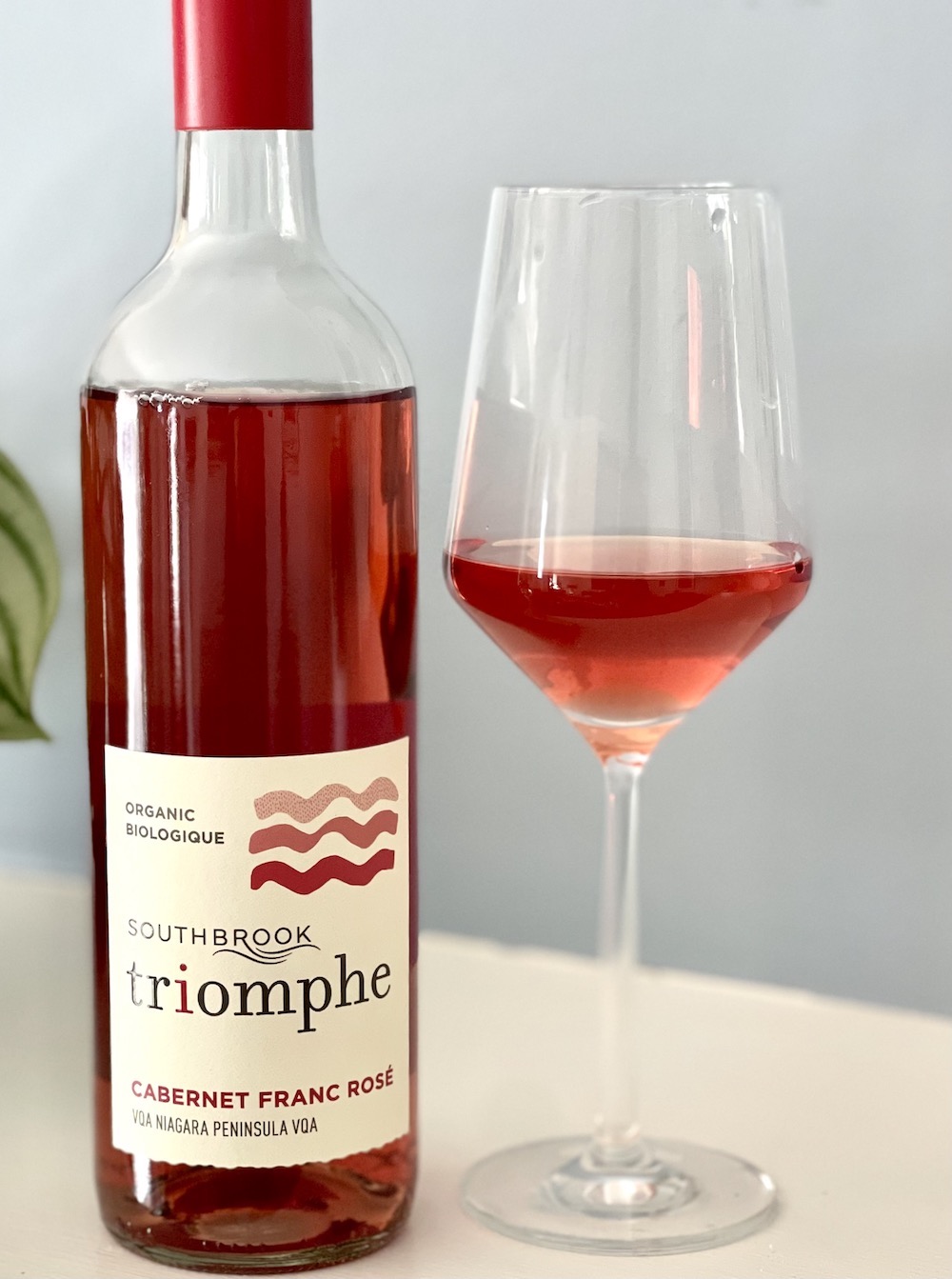
Southbrook Triomphe Organic Cabernet Franc Rosé 2022 ($24, Vintages now, previously reviewed, 92 points) — Moving to Niagara-on-the-Lake and organically grown Cabernet Franc, here’s another rosé that should be on your radar. Showing a deeper shade of pink in the glass, this offers the full range of red berries, summer herbs, and a subtle note of wild blackberries. It’s fresh and lively on the palate with fresh-picked raspberries, cherries, a touch of cassis and anise, herbs, and a hint of earthy character in a dry style driven by juicy acidity through the finish. Delicious!
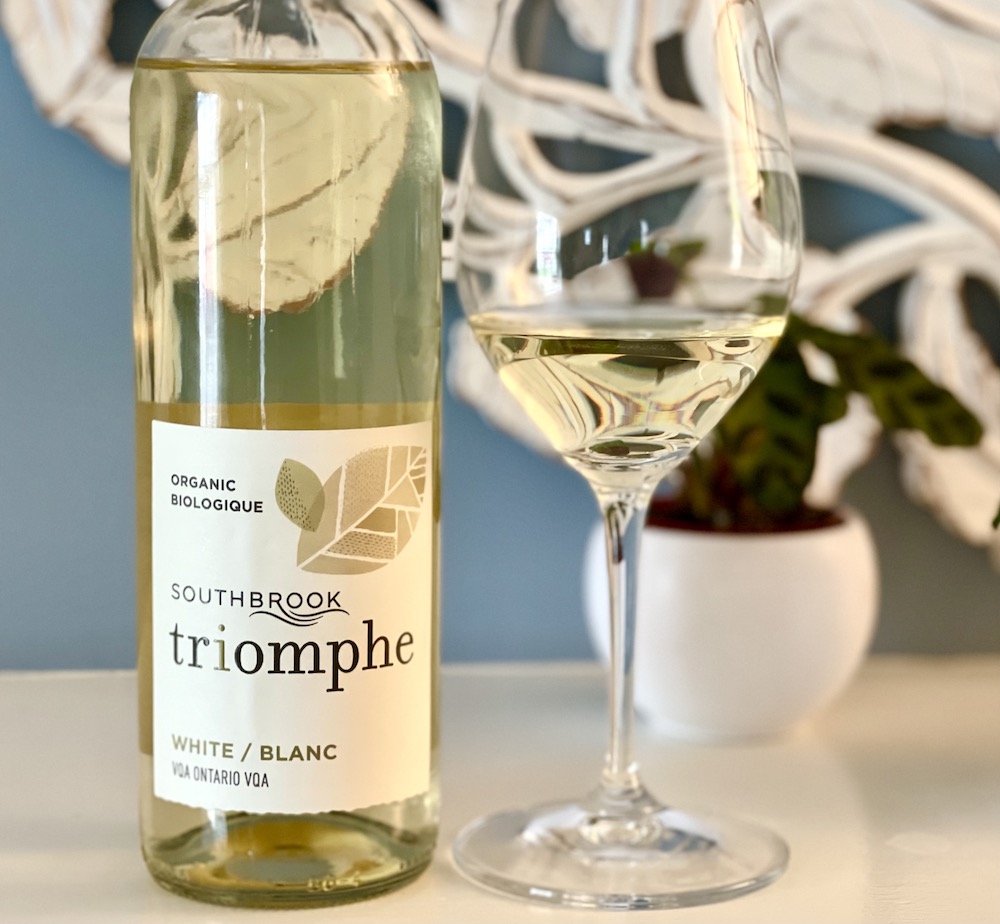
Southbrook Triomphe White 2023 ($20, 88 points) — This is a blend of Vidal, Chardonnay and Riesling all sourced from organic vineyards. Nothing too serious here, just a lovely summer sipper with a nose of juicy peach, pear, apricot and white flowers. It holds that profile on the palate with peachy/pear notes, grapefruit/lemon zest in a clean-as-a-whistle style through the finish. Chill, pour, and sip, it’s that easy.
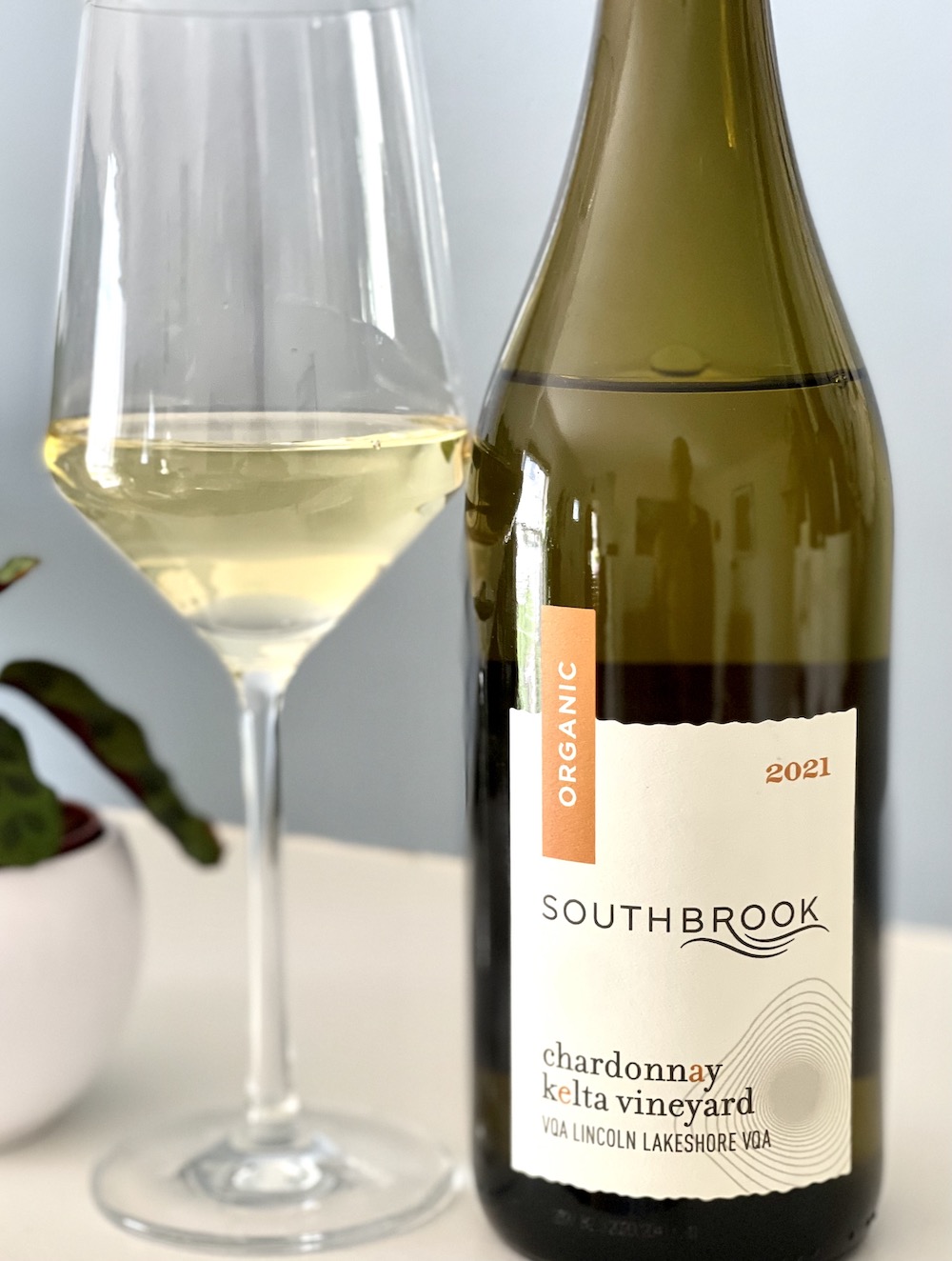
Southbrook Kelto Vineyard Chardonnay 2021 ($38, wine club first, 92 points) — The grapes were harvested from a mixed clonal block of old vines (25 years old) farmed organically by Rebecca and Steven Drotos in the Lincoln Lakeshores sub-appellation. The wine was aged in French oak (20% new) for 10 months. It has a fresh, pretty, and persistent nose of pear, apple skin, salinity, lemon, honeysuckle and just a hint of spice. It carries some weight on the palate with ripe stone fruits, flinty minerality, savoury notes, vanilla toast and a bright, lifted finish.
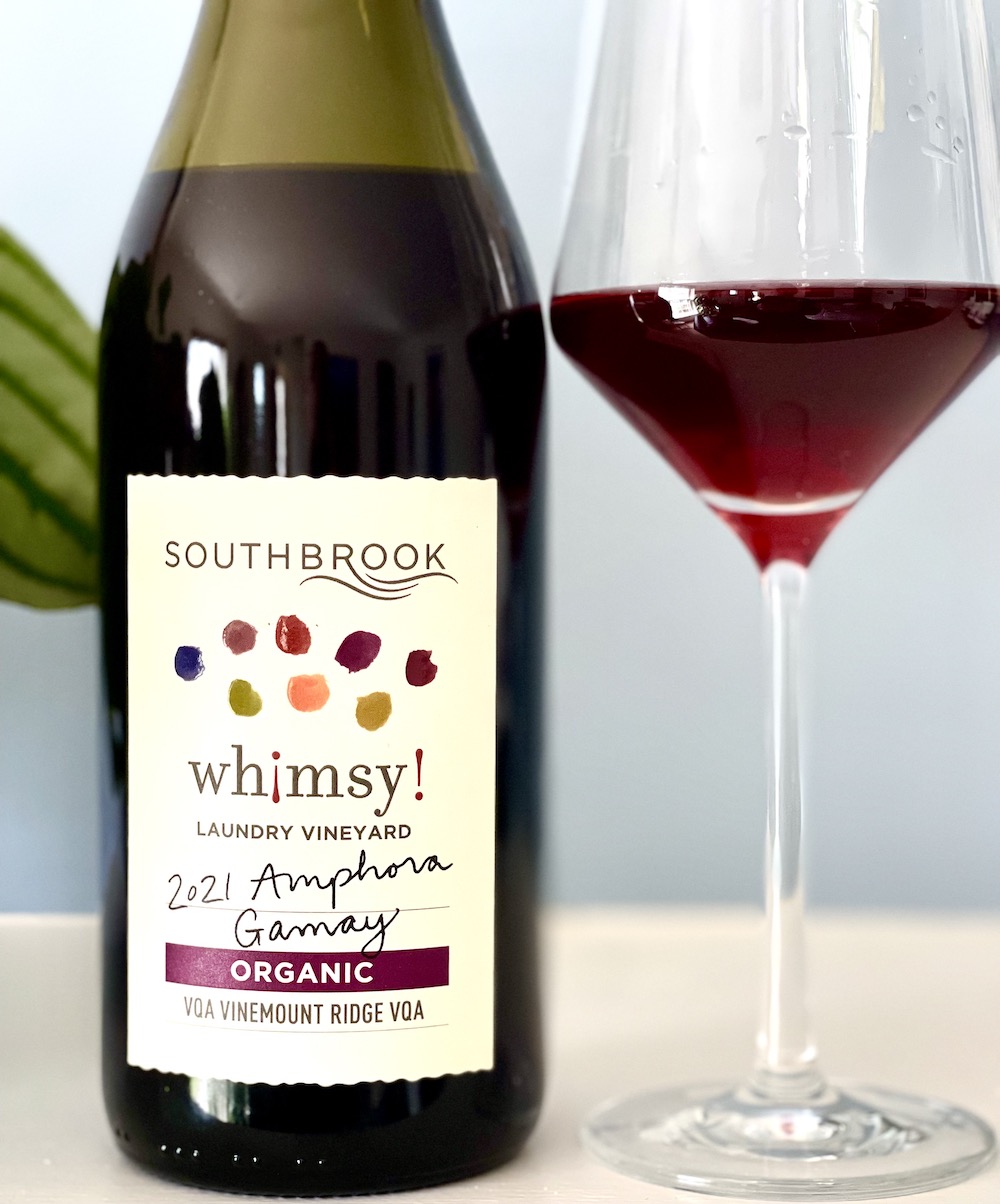
Southbrook Whimsy! Amphora Gamay 2021 ($38, 92 points) — This Gamay, sourced from the 60-acre organic Laundry Vineyard in the Vinemount Ridge sub-appellation, is wild fermented in large old oak foudres with 100% destemmed fruit. Aging was done in a combination of one clay amphora and the remainder in neutral French oak. What a delightful Gamay. It shows a lighter shade of red in the glass but has vivid aromas of purple plums, black currants, cranberries, brambly raspberries and black pepper. It’s juicy and tangy on the palate with a silky texture that shows off the earthy red berries, plums, and anise that all lead to a mouth-watering finish. A fresh summer red.
A trio of new wines from Henry of Pelham
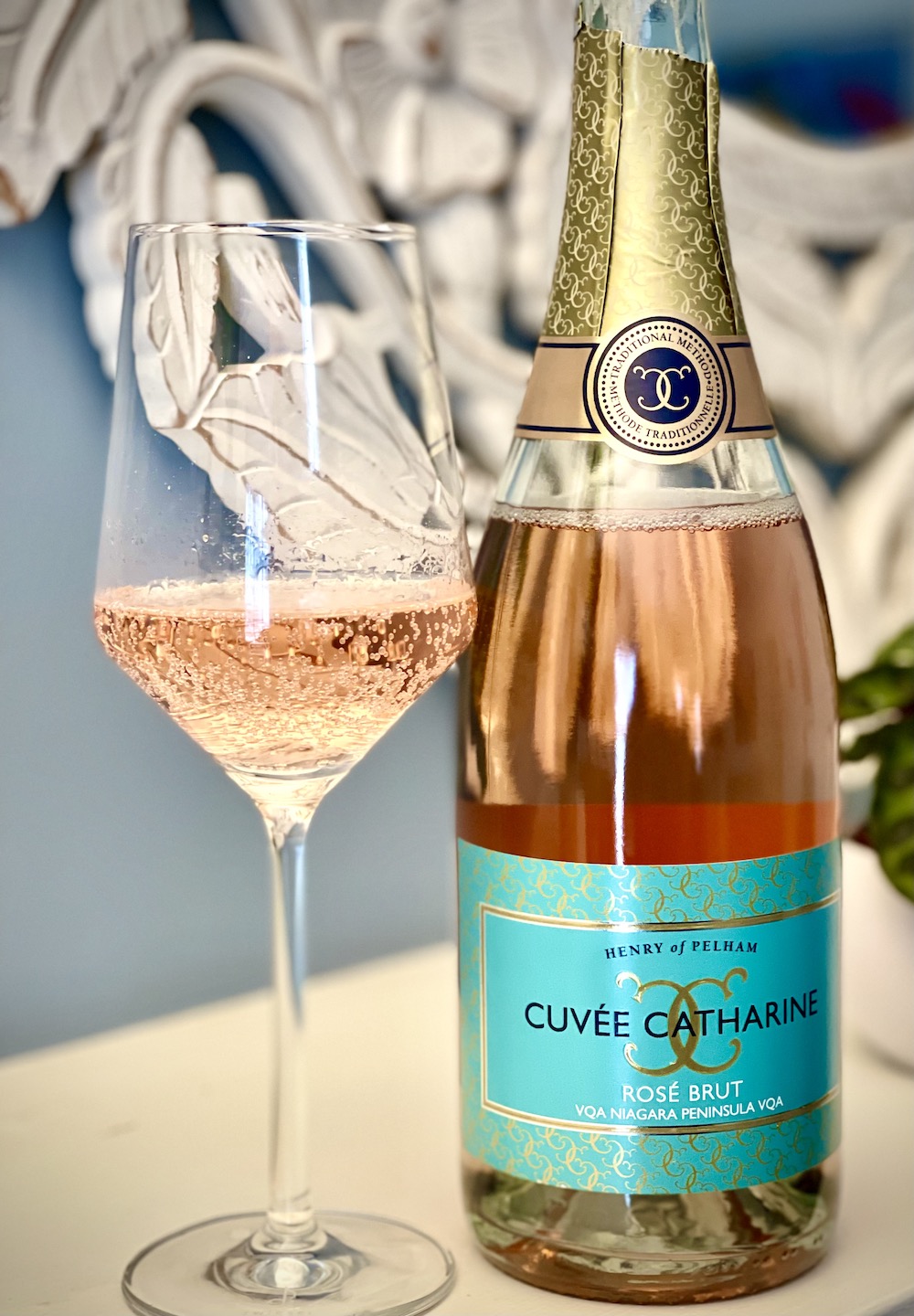
Henry of Pelham Cuvée Catharine Rosé Brut NV ($33, 91 points) — HoP has a deep portfolio of sparkling wines at all price points. The Cuvée Catharine wines represent the top tier. This NV iteration is a blend of 70% Pinot Noir and 30% Chardonnay and aged on the lees for 24 months. It’s quite aromatic on the nose with bright red berries, some creamy/leesy notes, a touch of citrus and a gentle bead of bubbles in the glass. It’s racy and lifted on the palate with fresh raspberries, red currants and cherry fruit, citrus zest, brioche, and elegant effervescence through the bright, lifted finish.
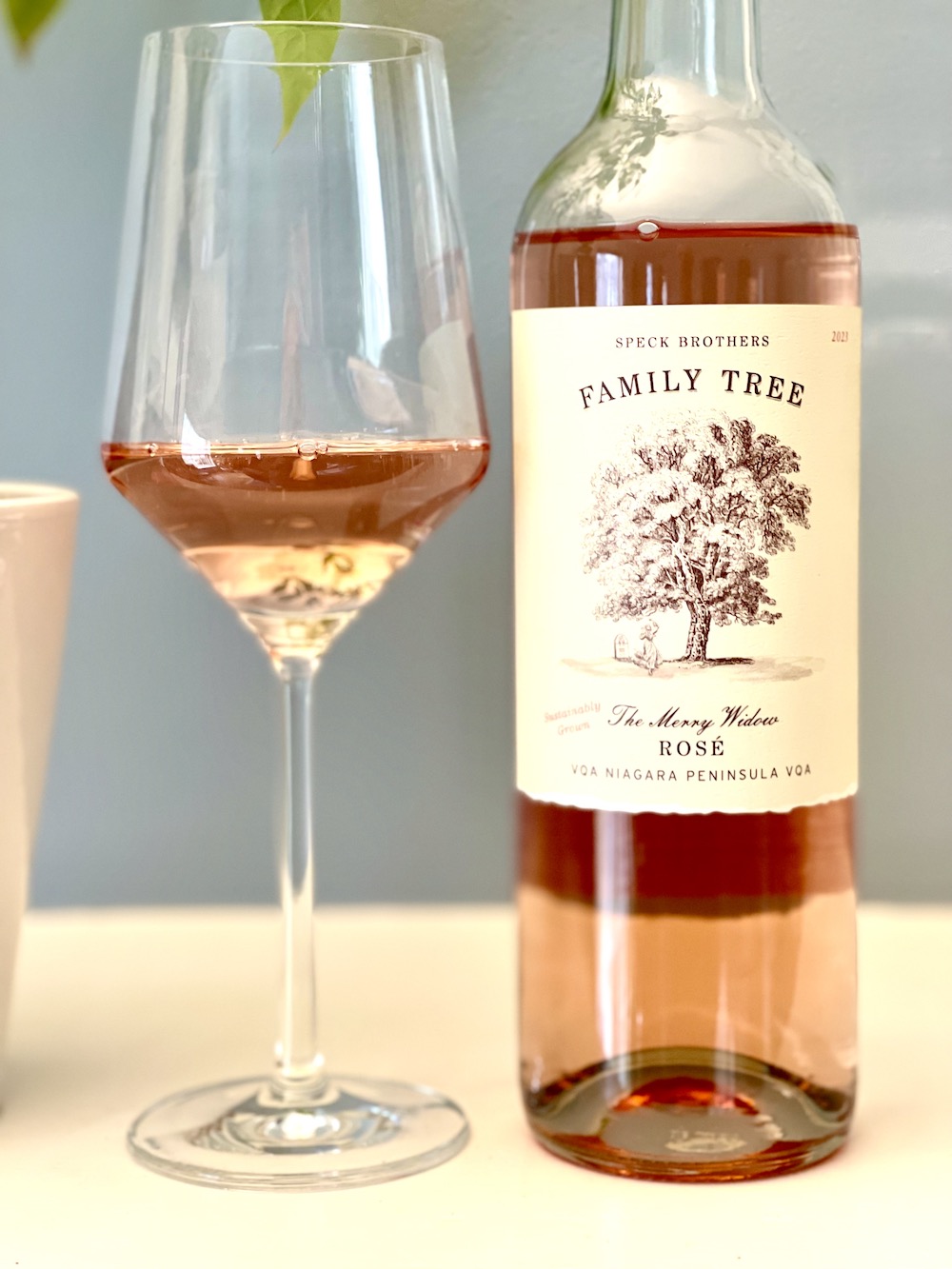
Henry of Pelham The Merry Widow Rosé 2023 ($17, Vintages now, 88 points) — A fruit forward nose of wild raspberries, tropical fruits, herbs, grapefruit and cherries. There is a touch of sweetness on the palate and the full complement of ripe red berries, citrus zest, and herbs.
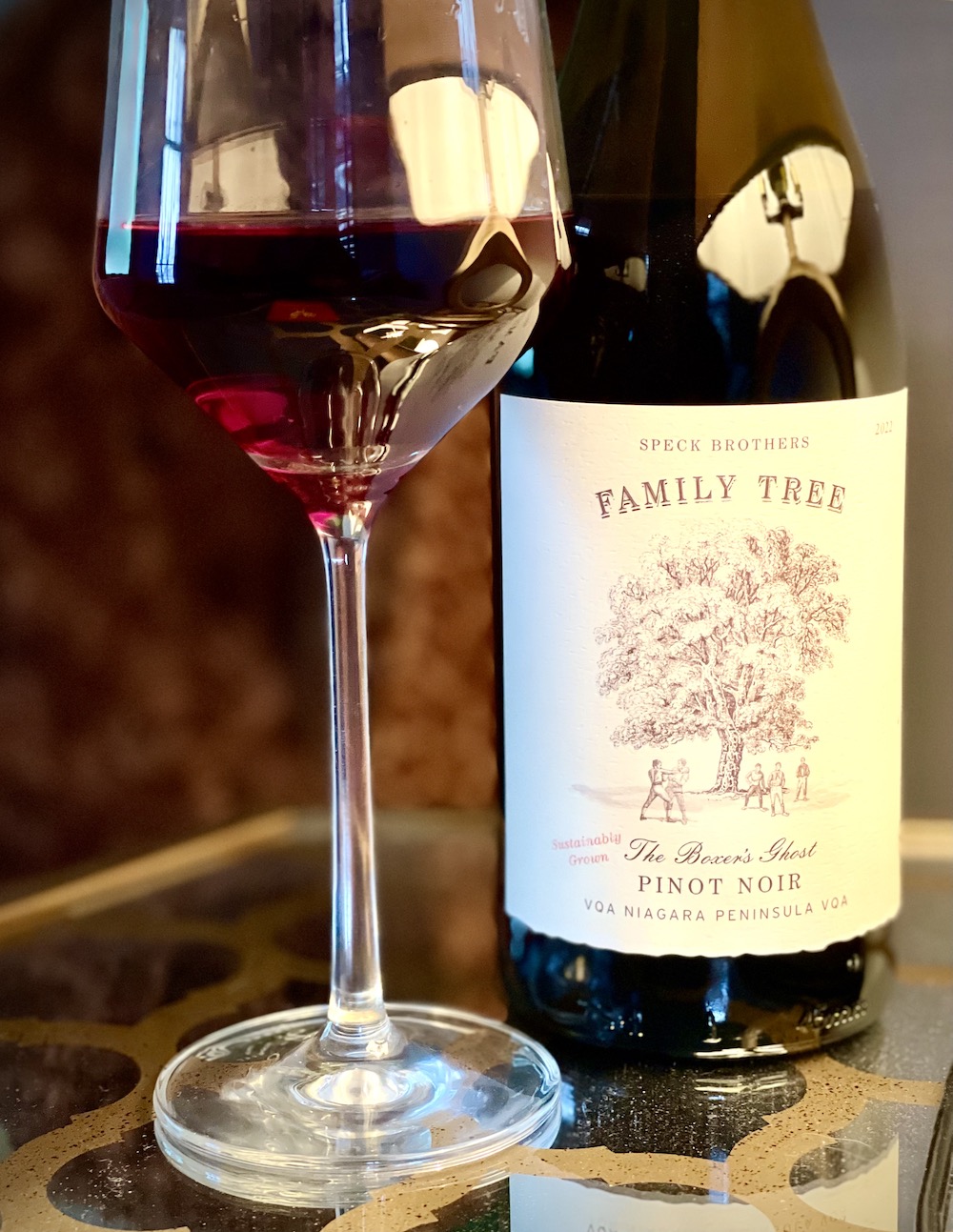
Henry of Pelham The Boxer’s Ghost Pinot Noir 2022 ($20, 88 points) — This smartly priced Pinot is lightly oaked for six months in European barrels. It has a pleasing, fresh nose of dark cherries, anise, brambly wild raspberries, and spice box. It’s medium bodied and smooth on the palate, leaning more to darker berries with anise, leather, spice, and a juicy finish.


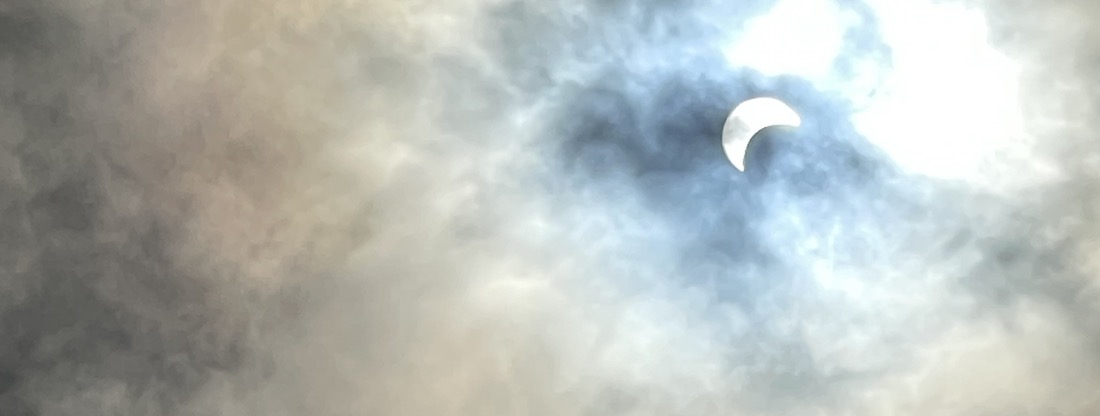





Comment here